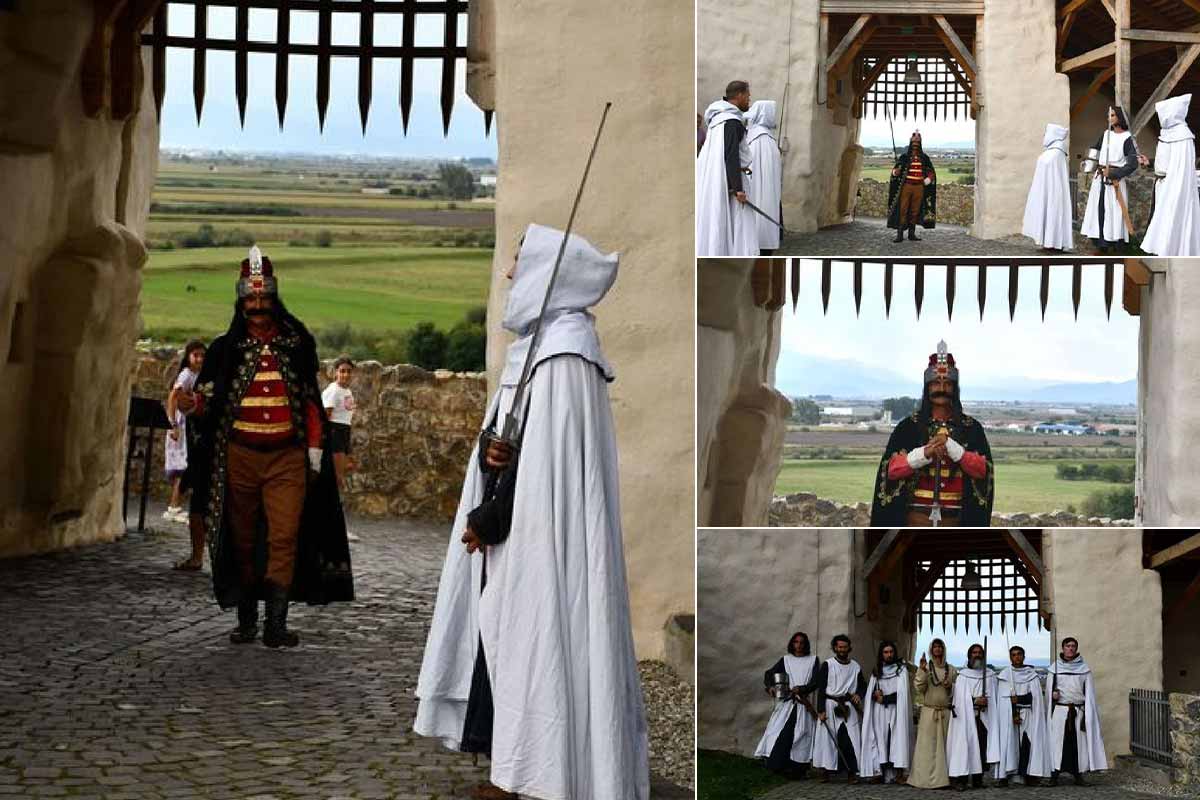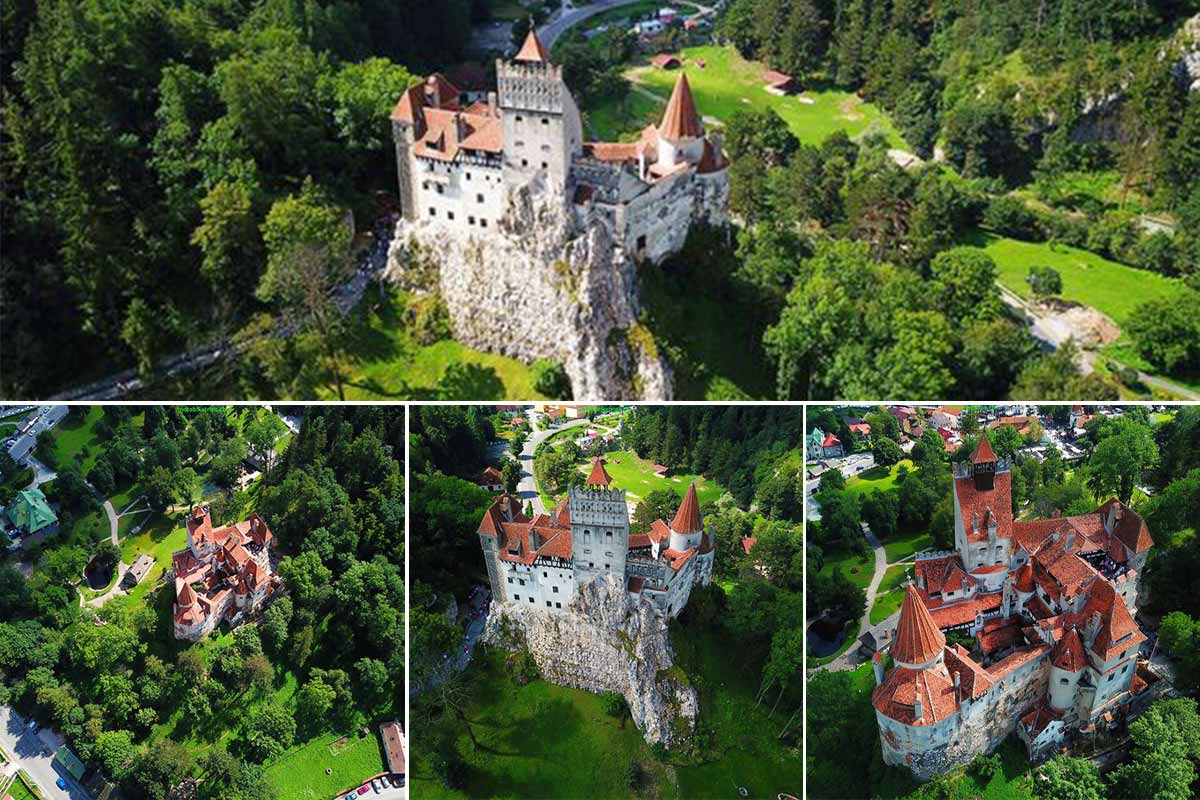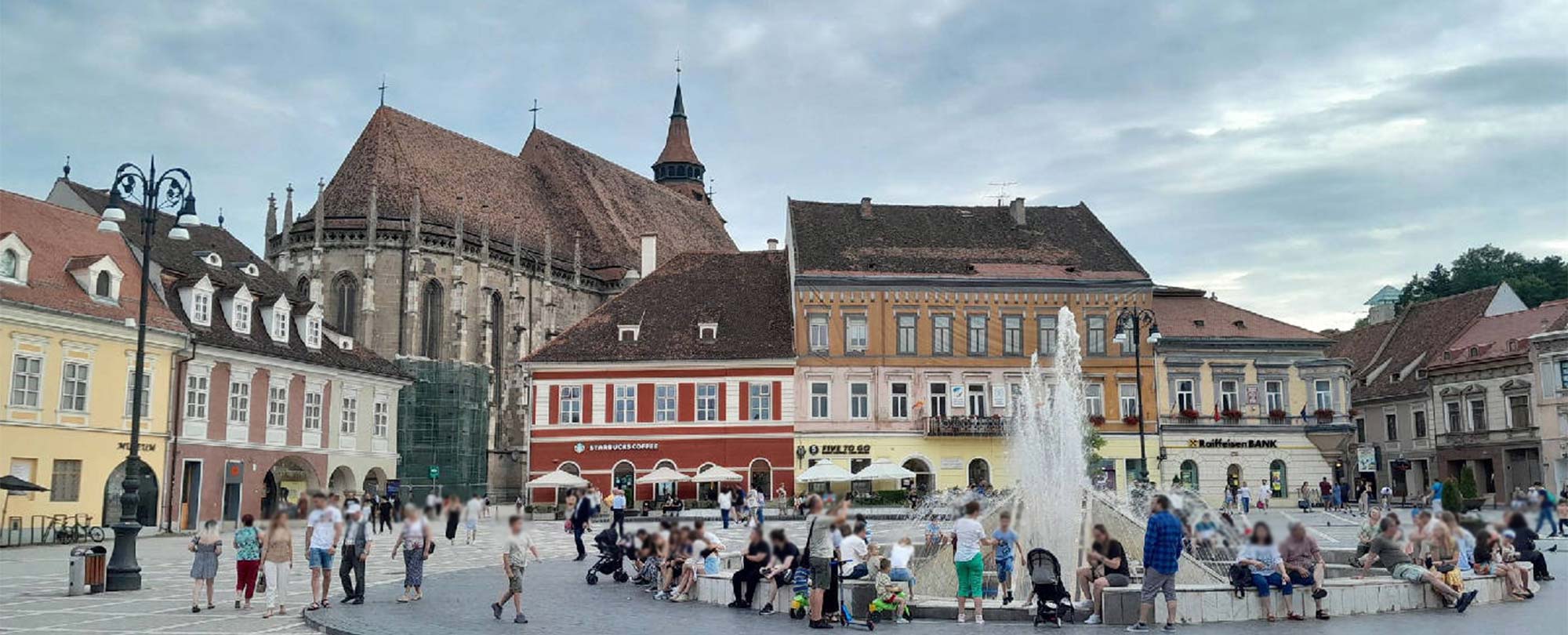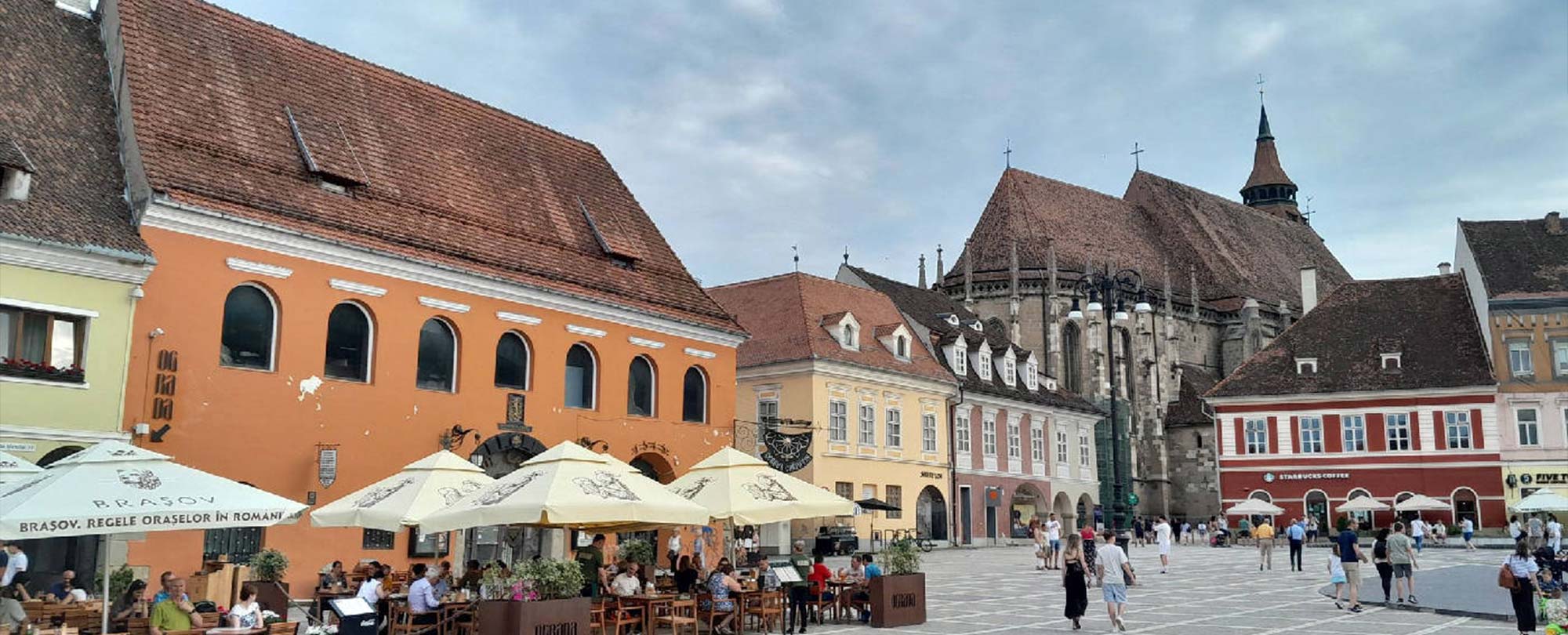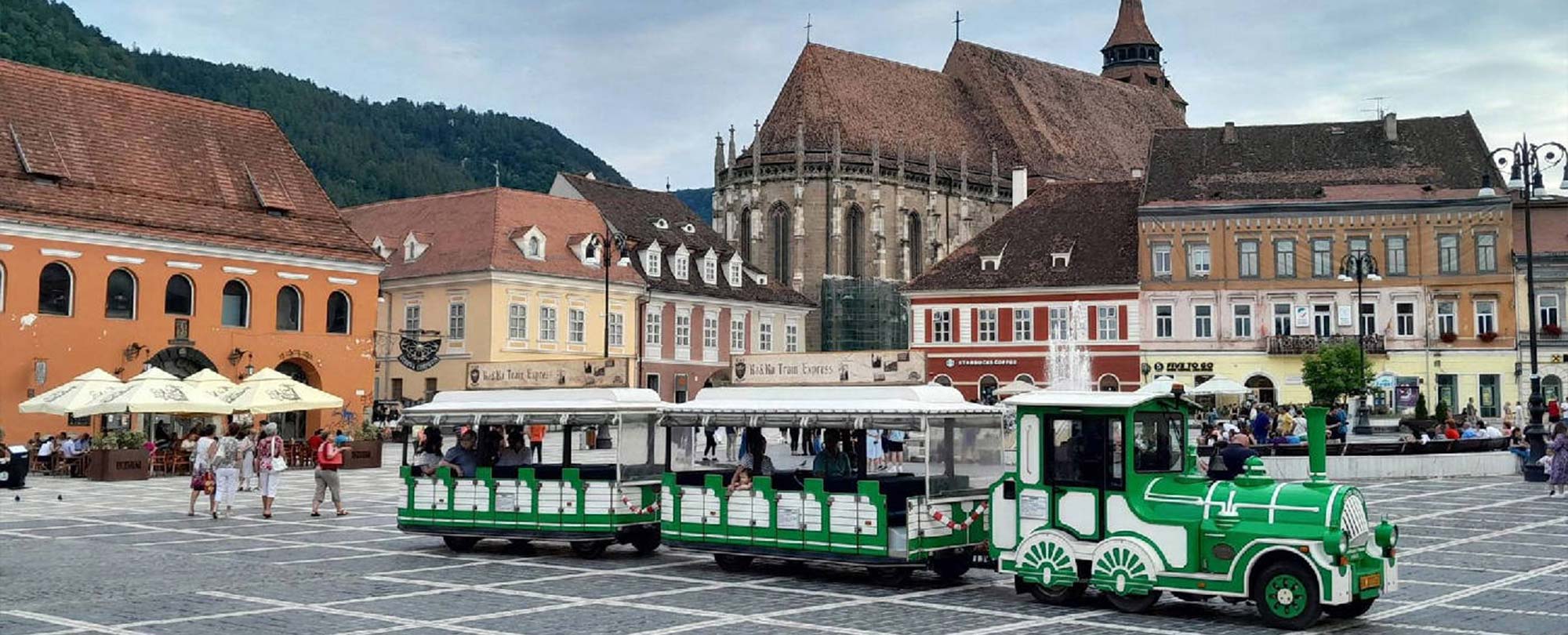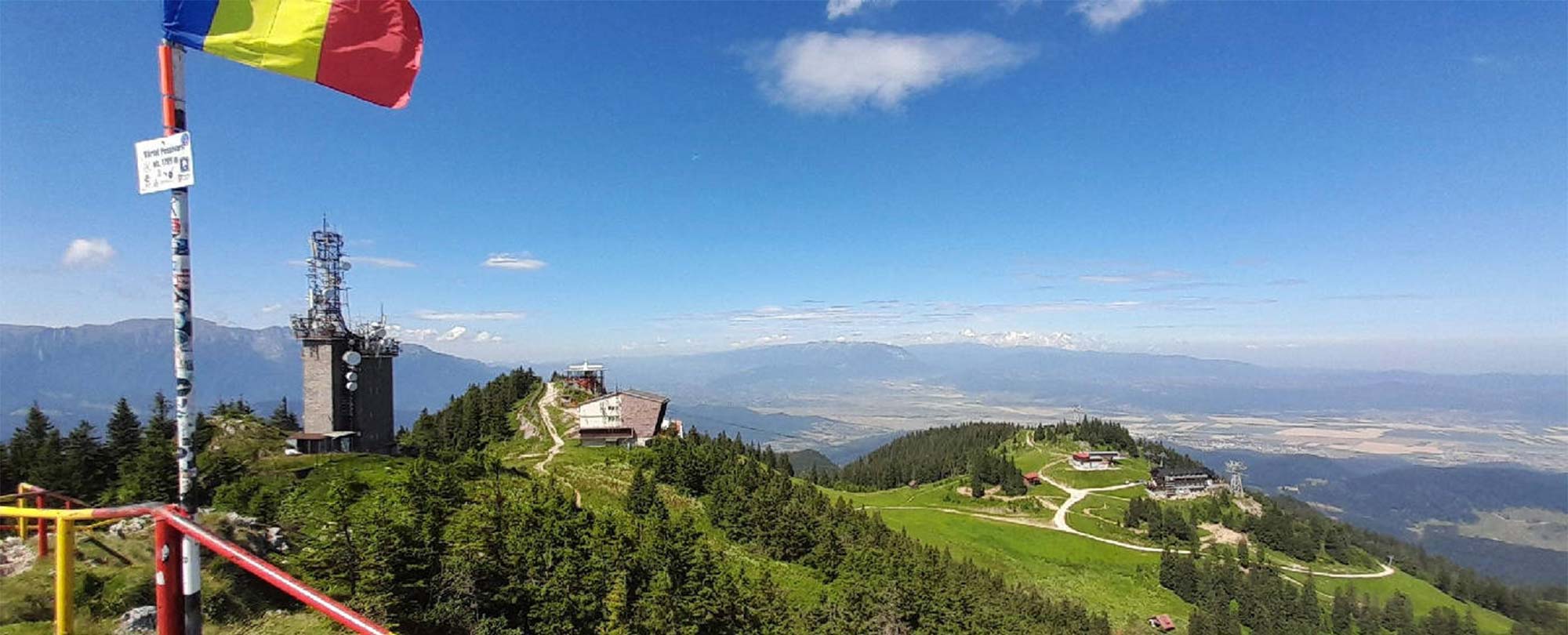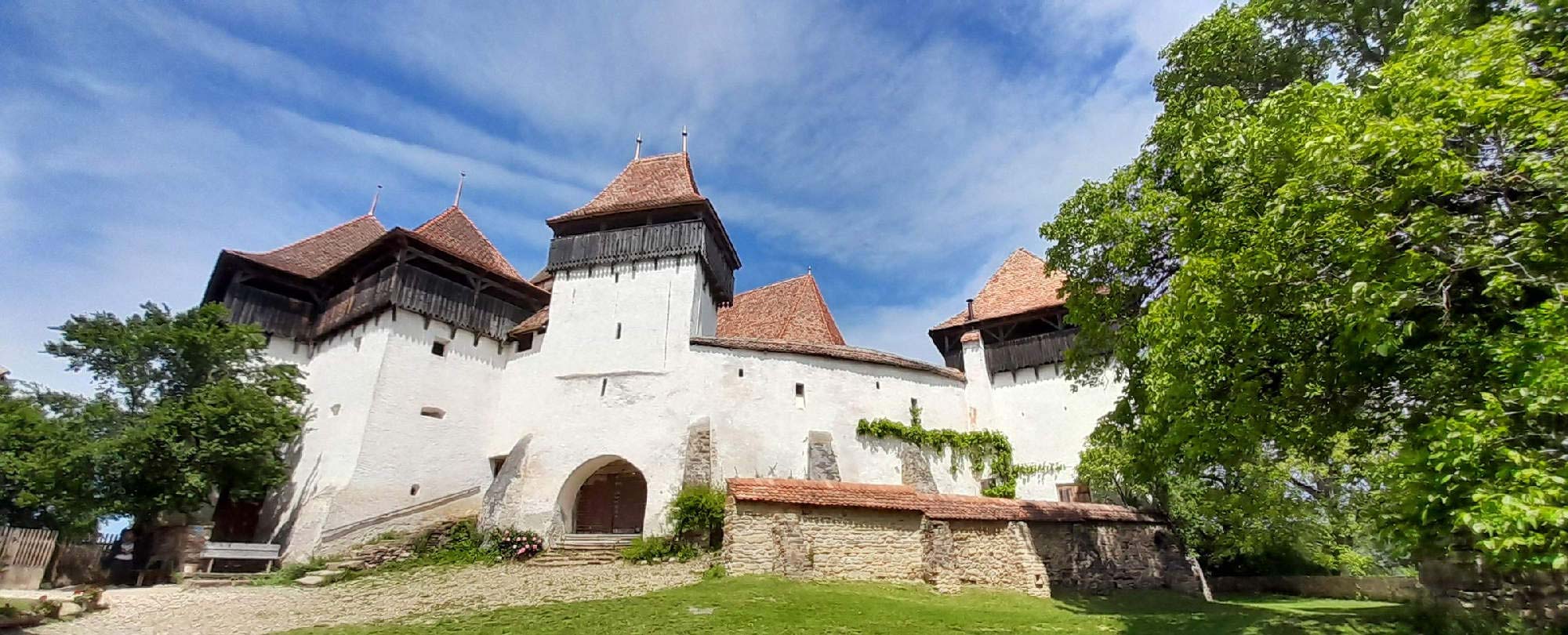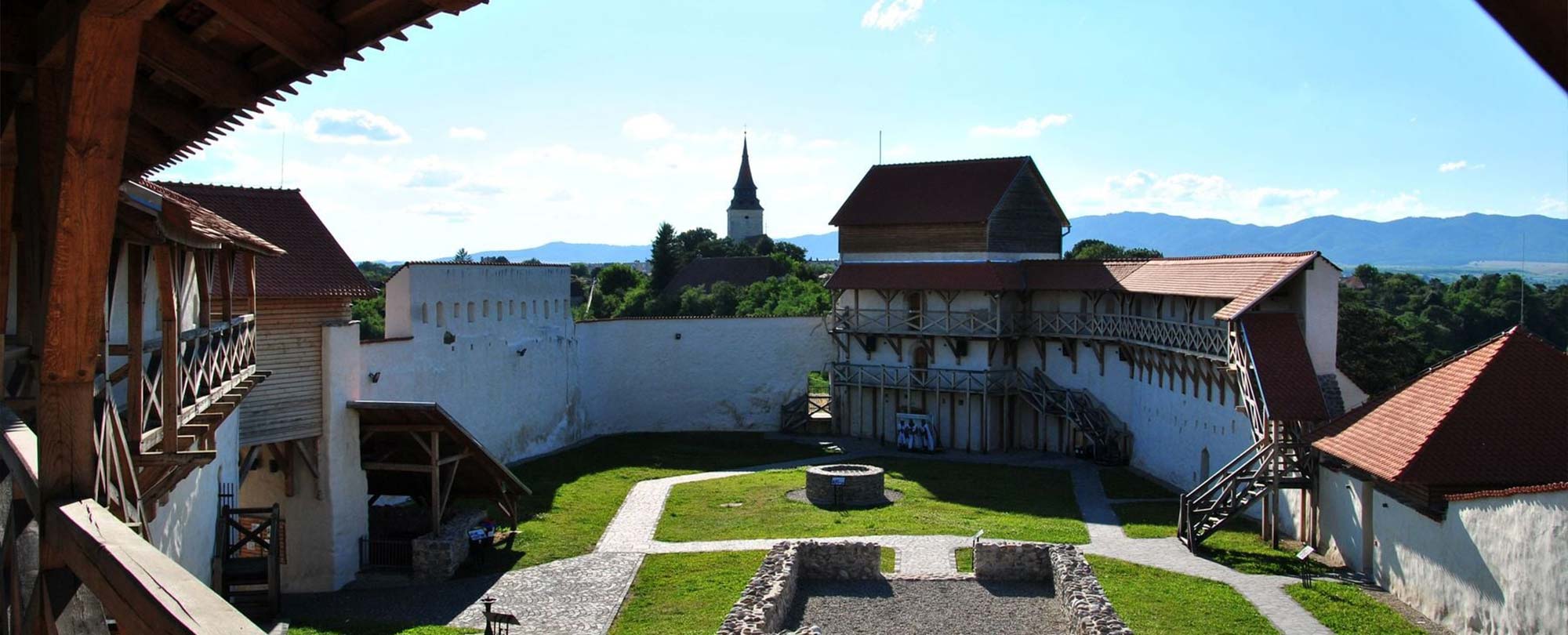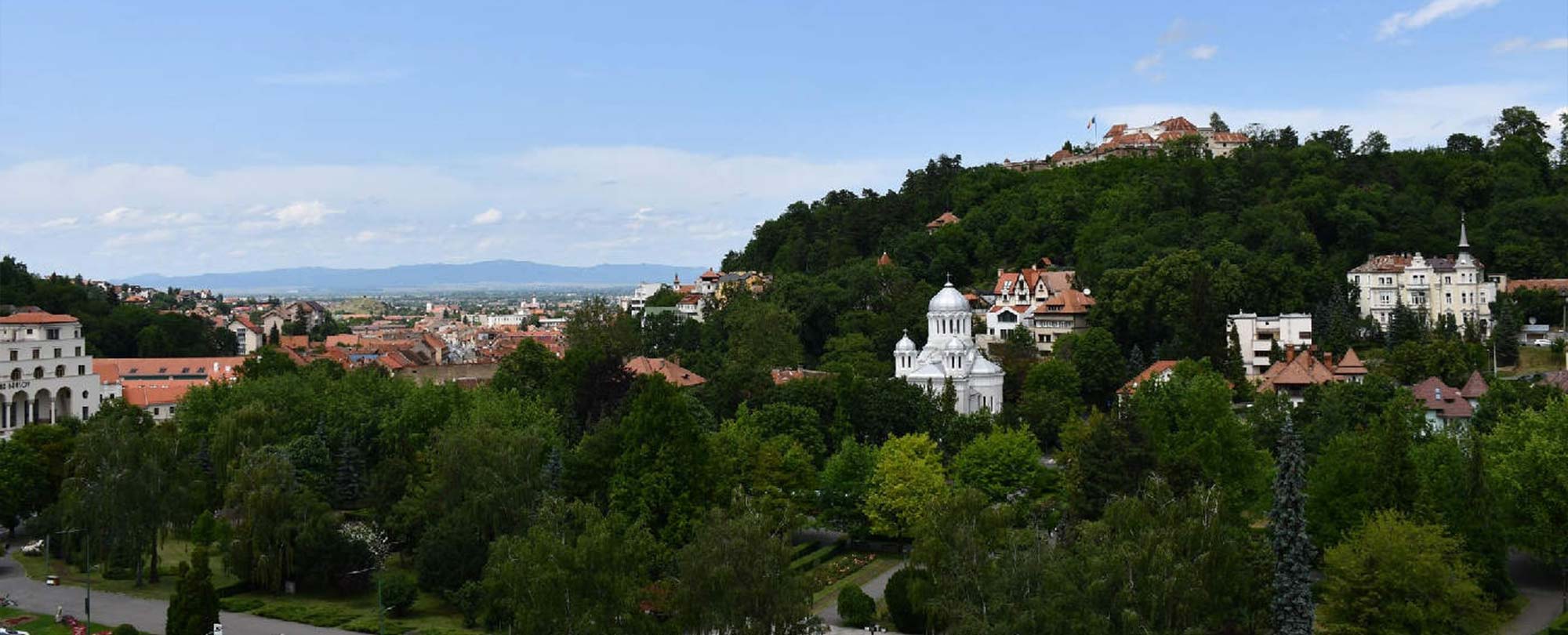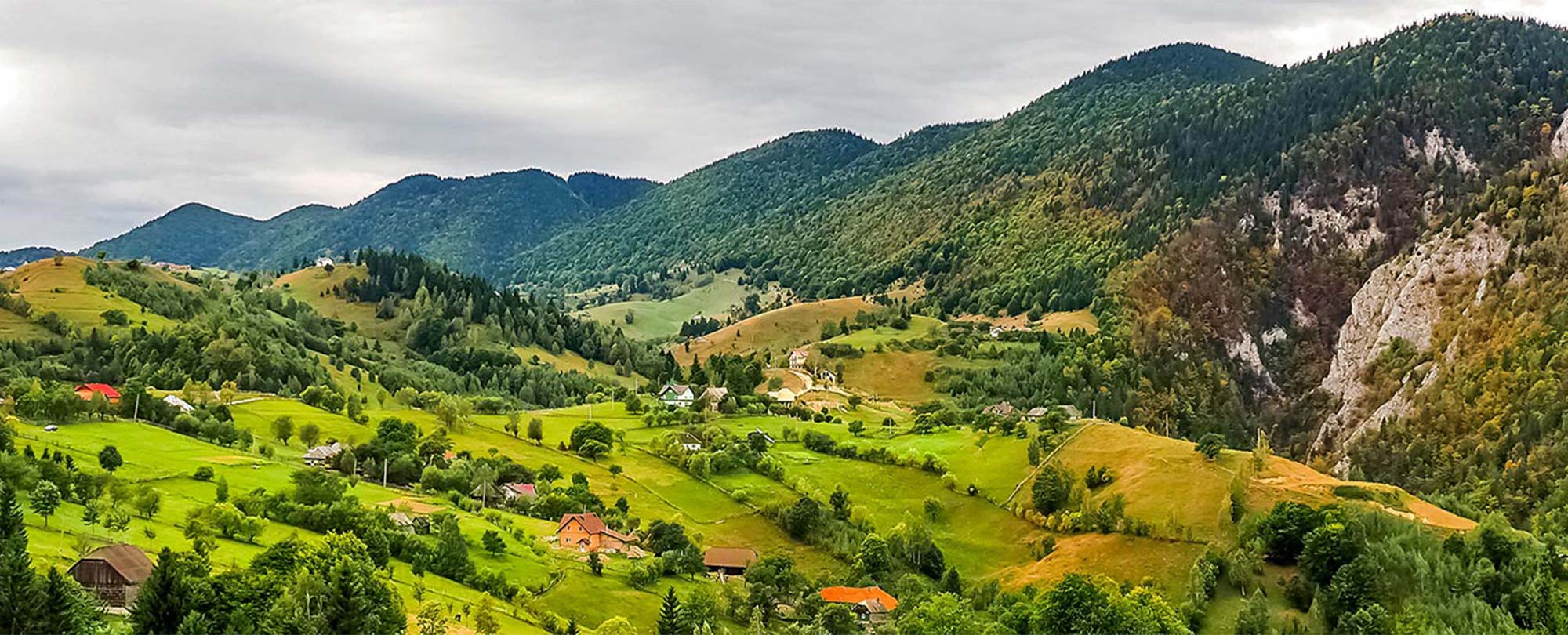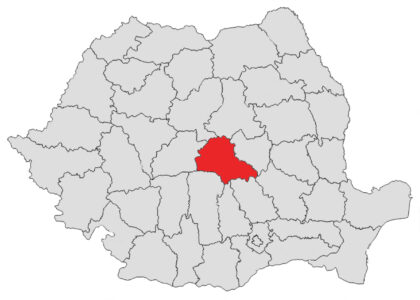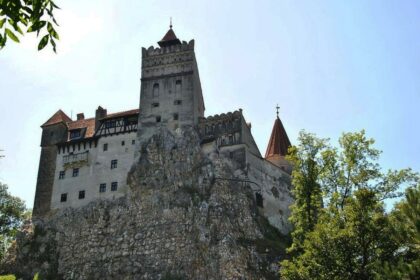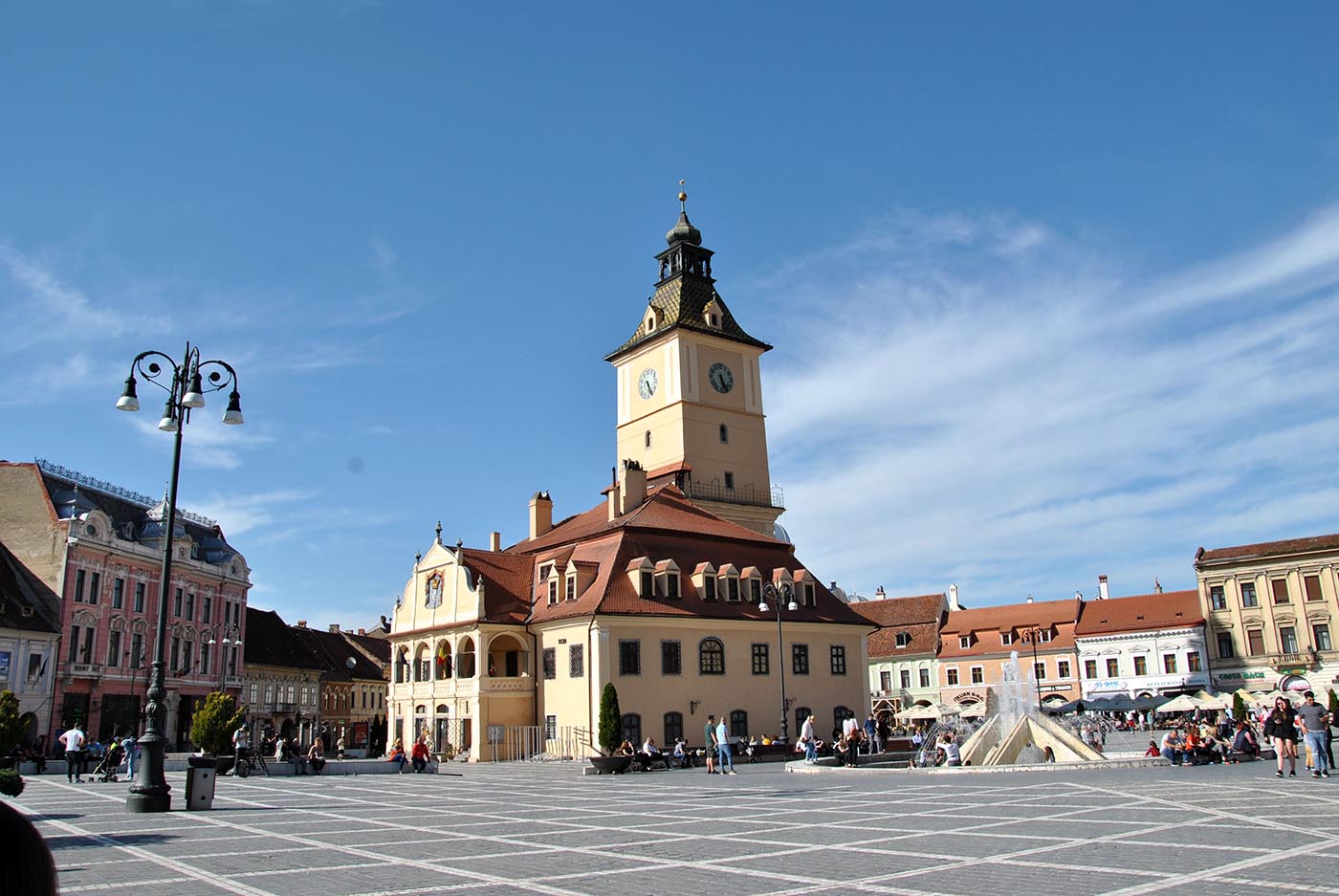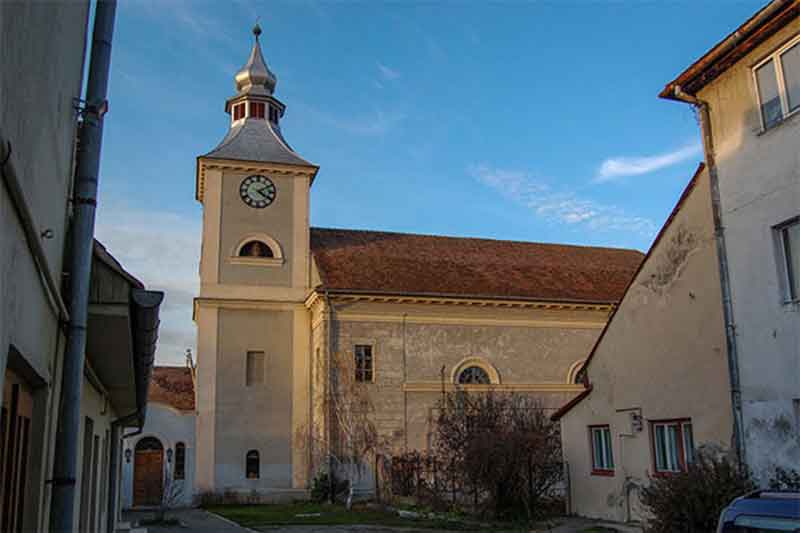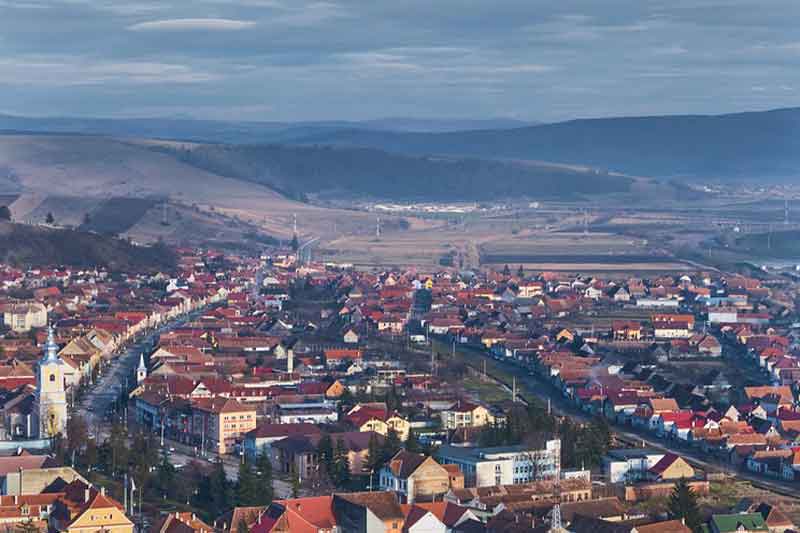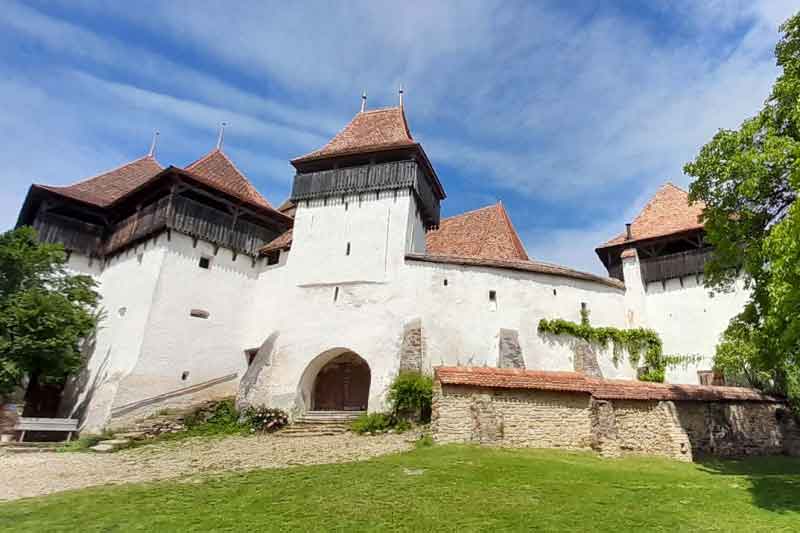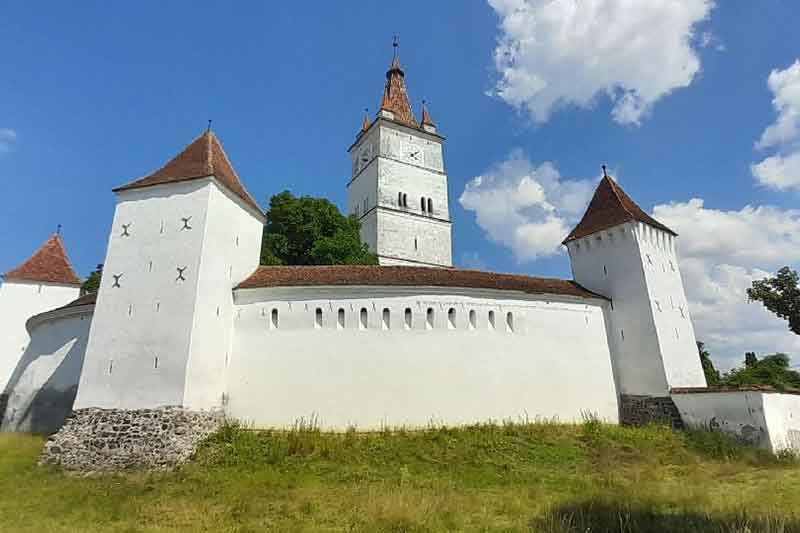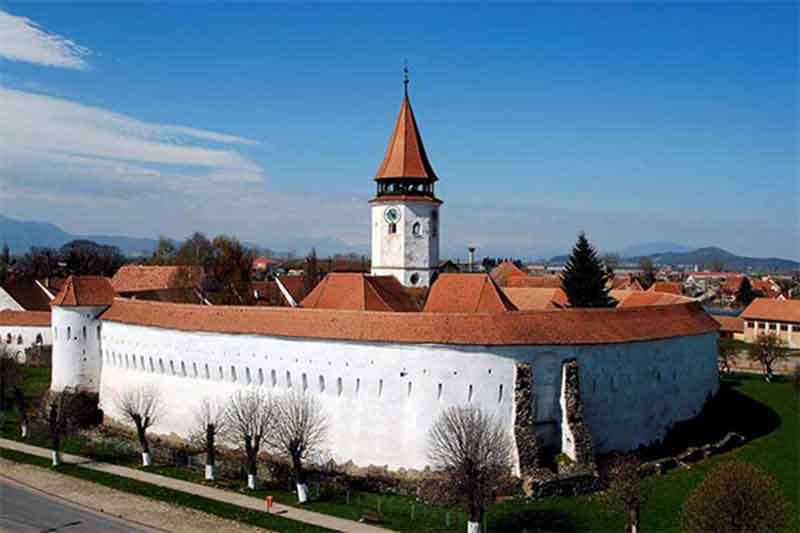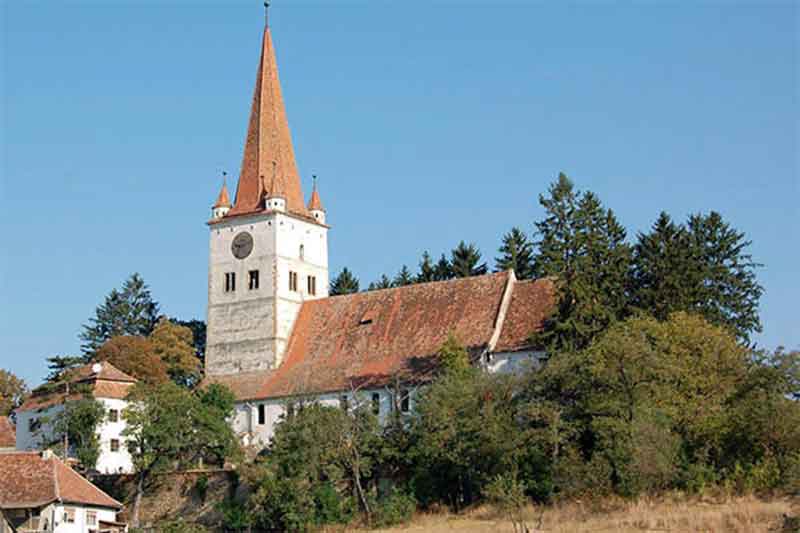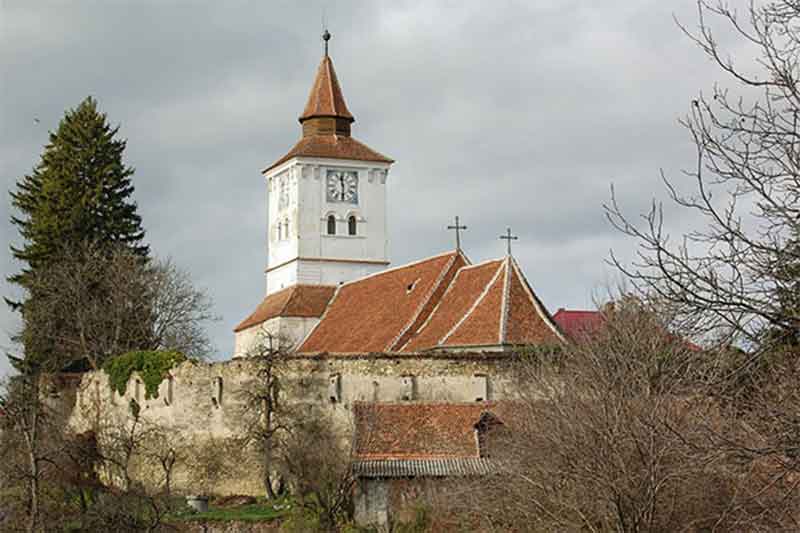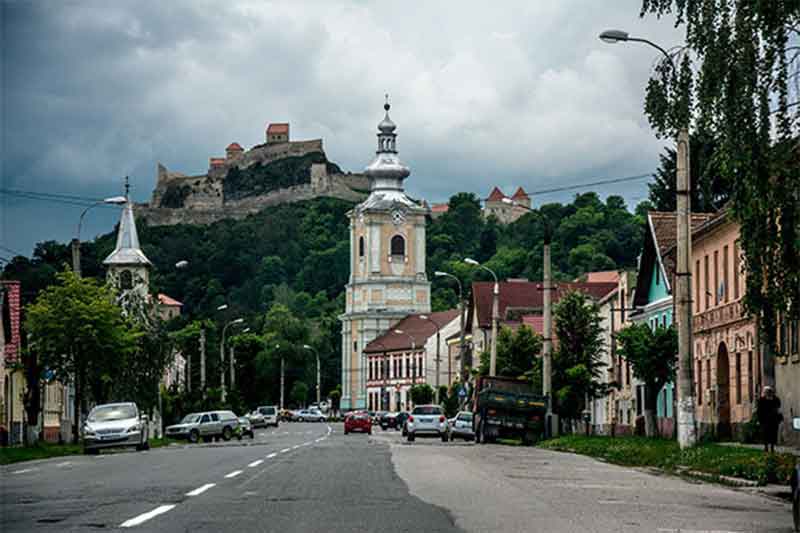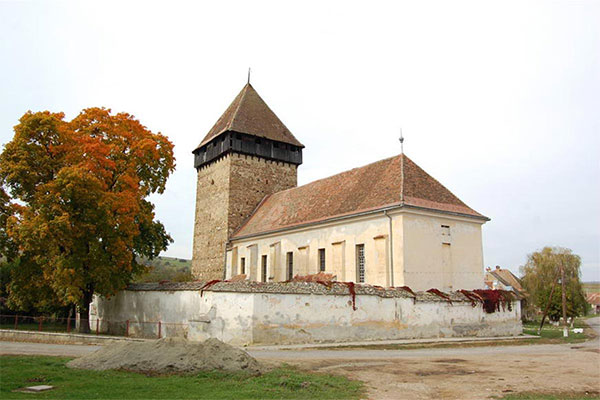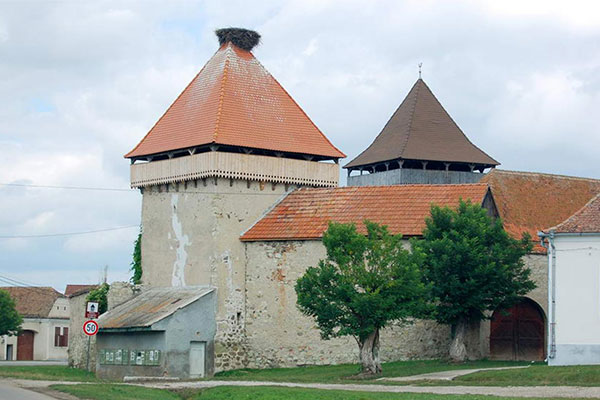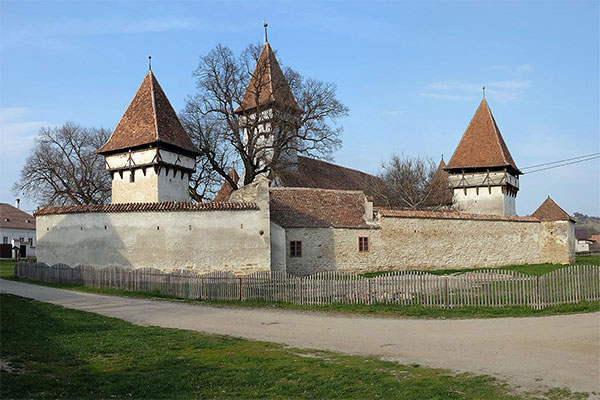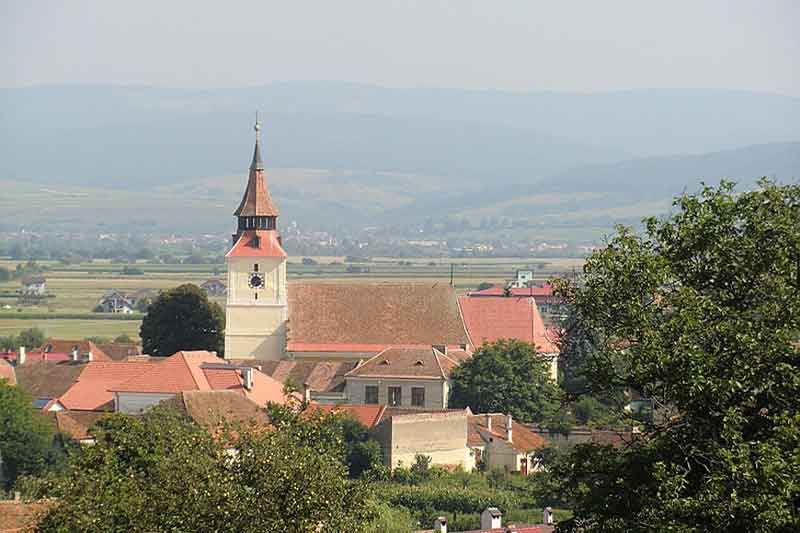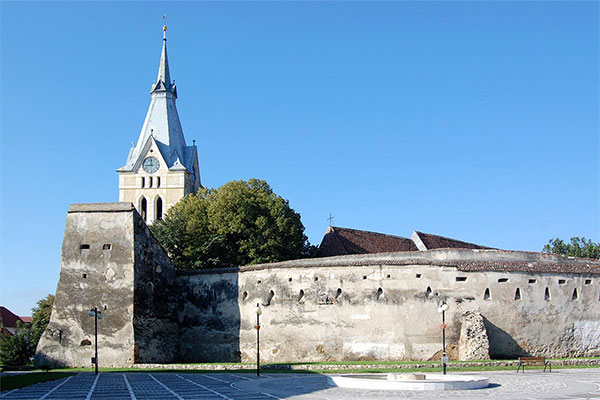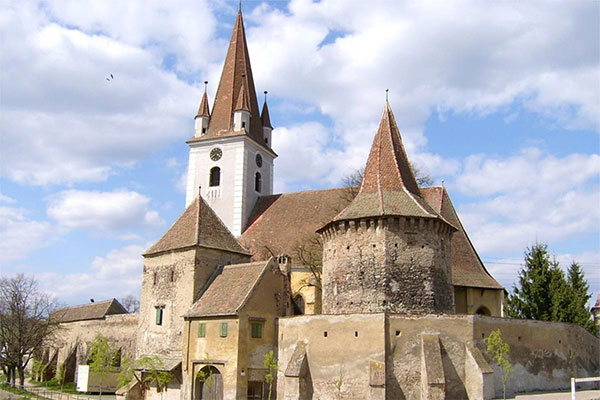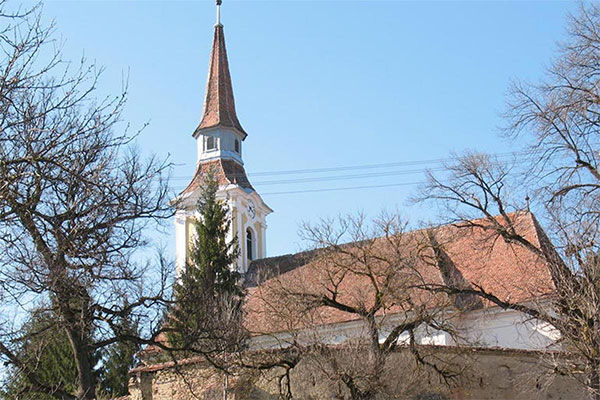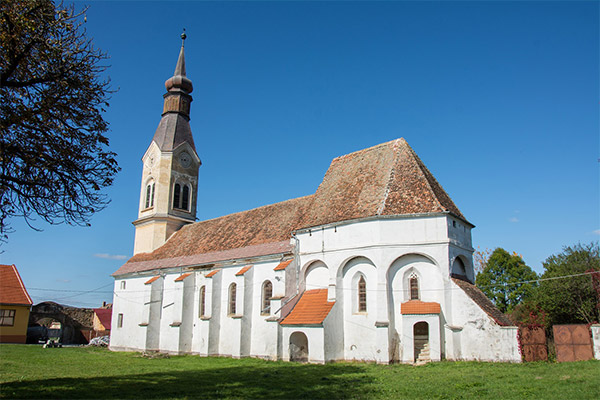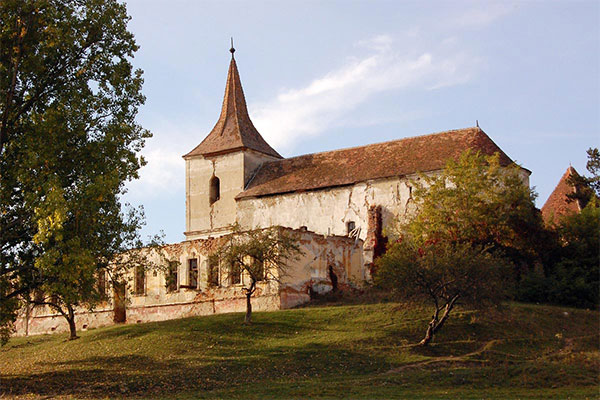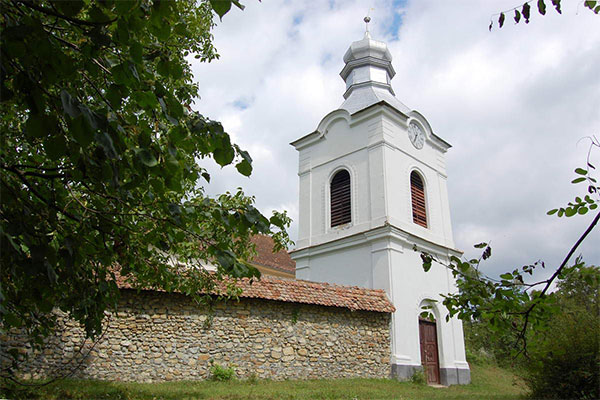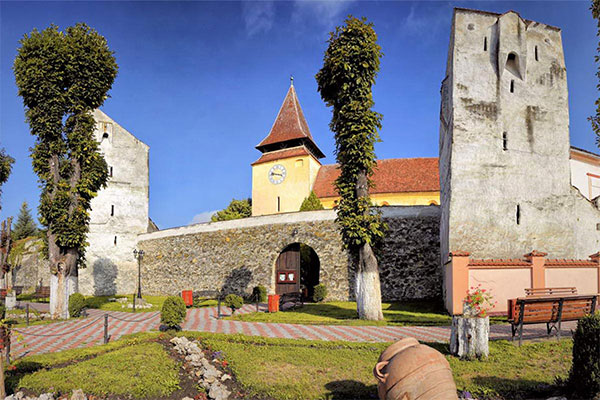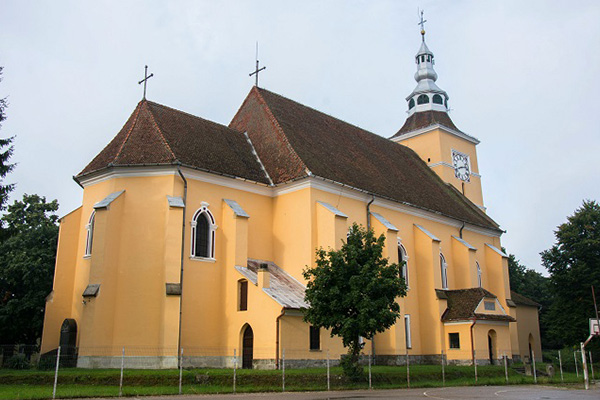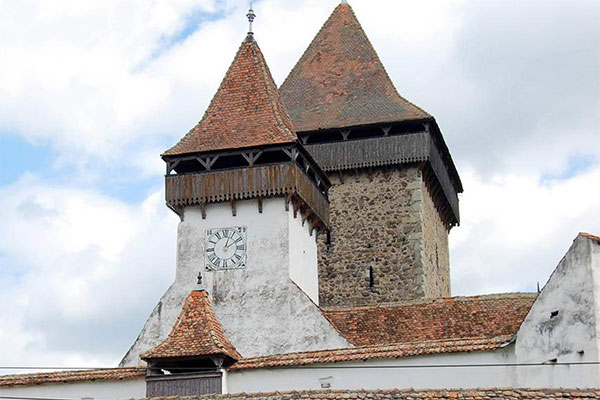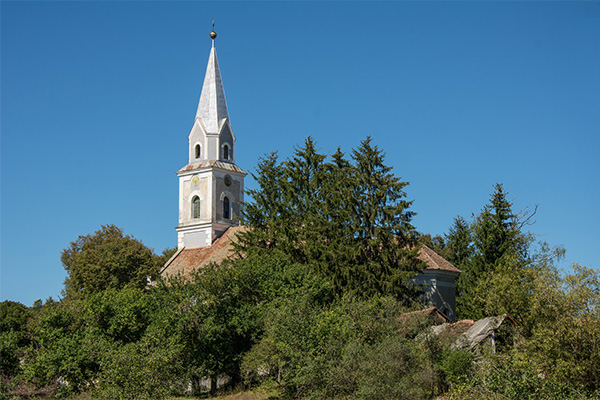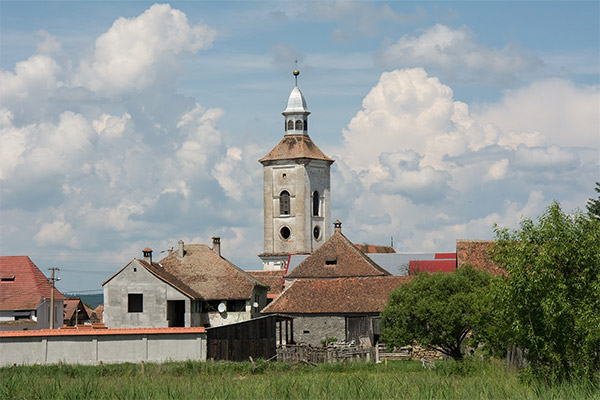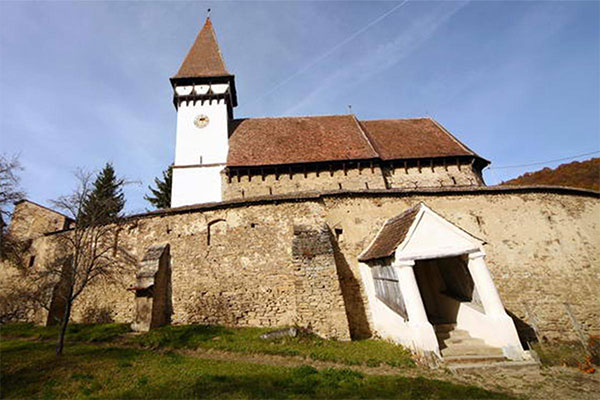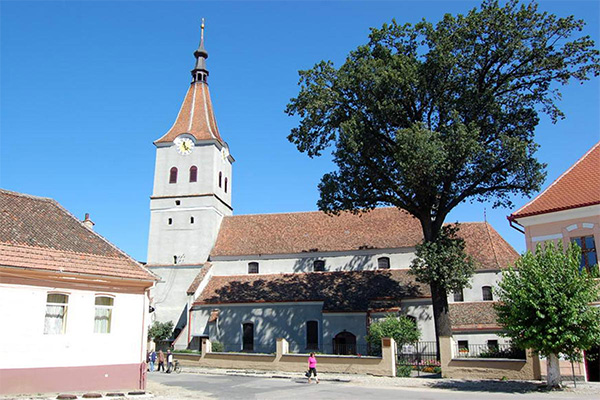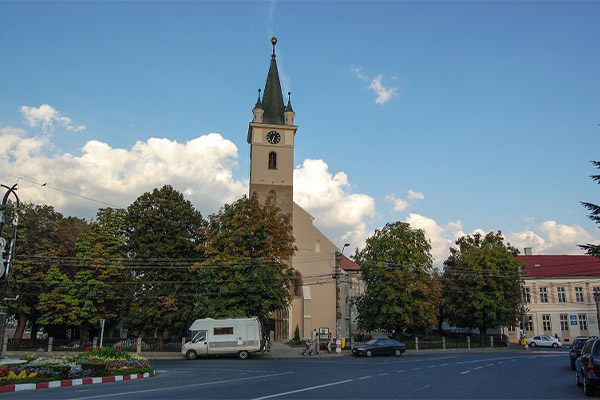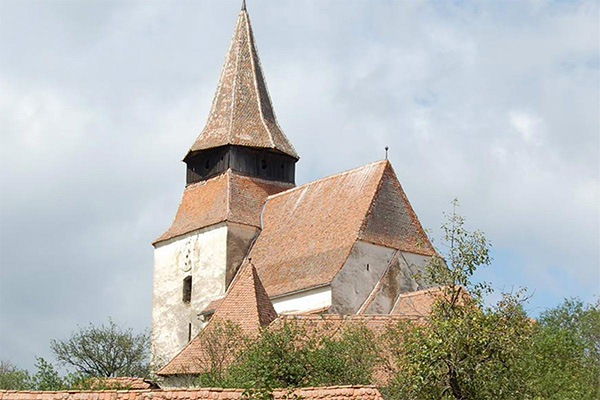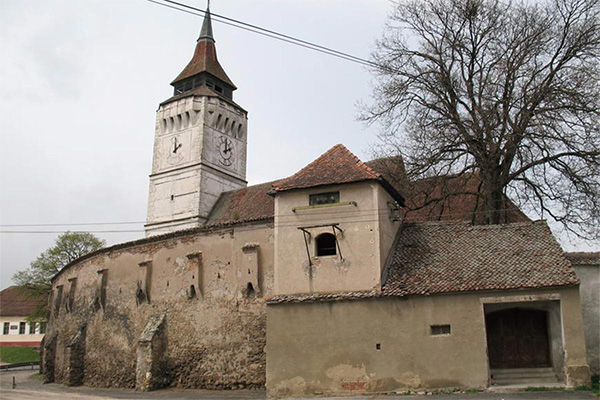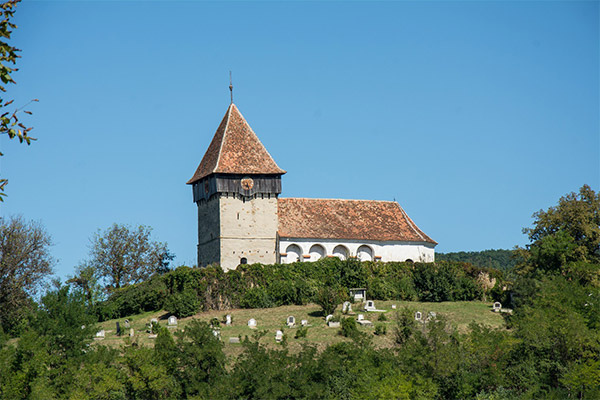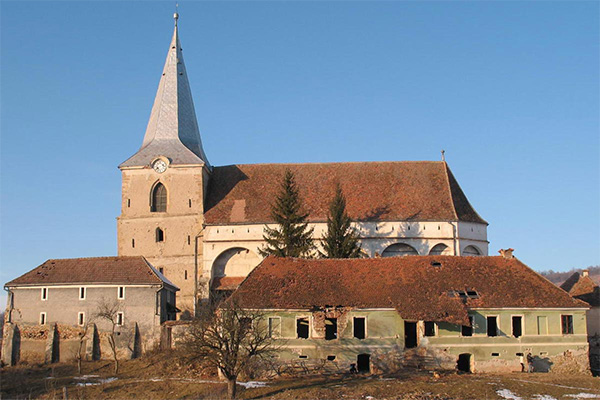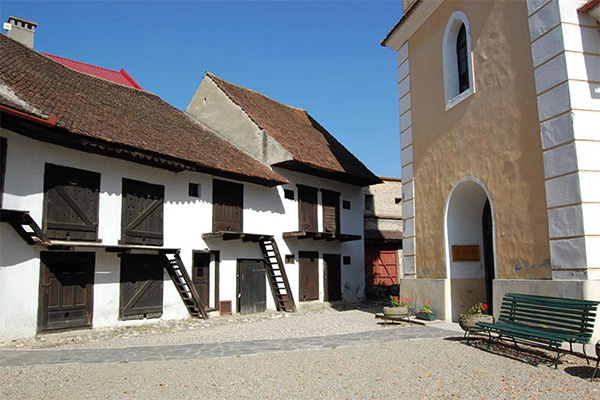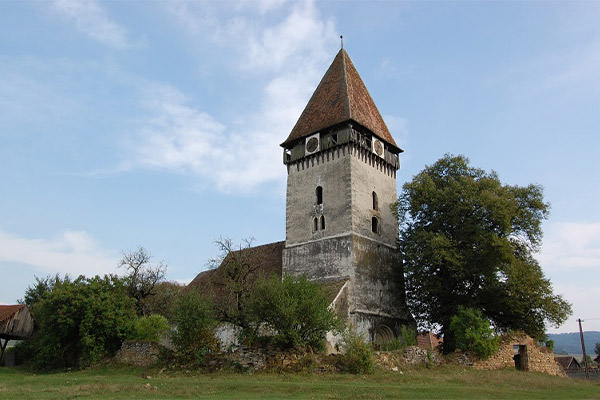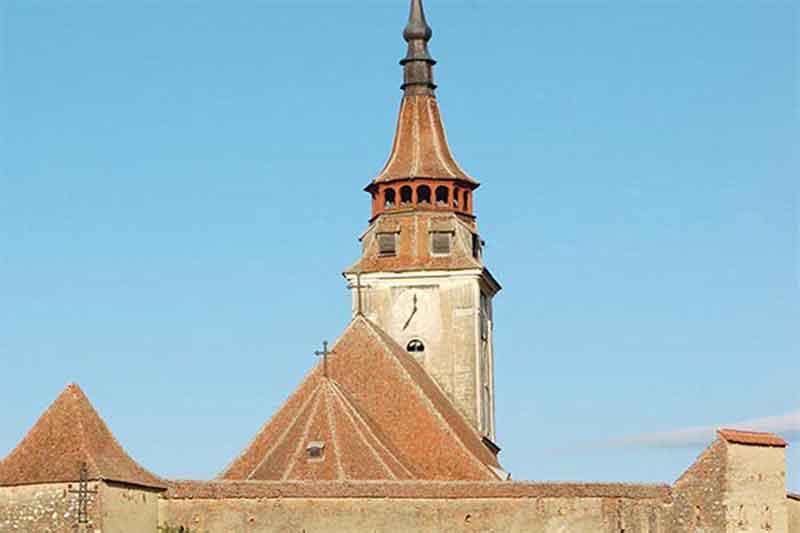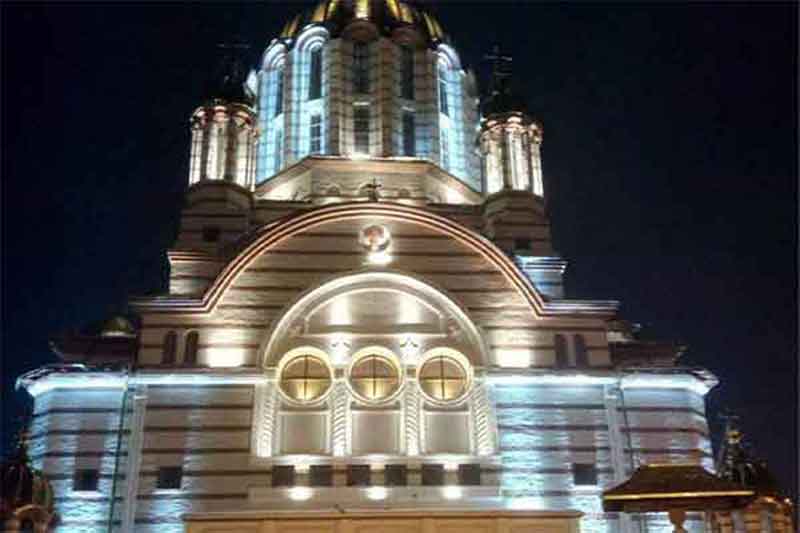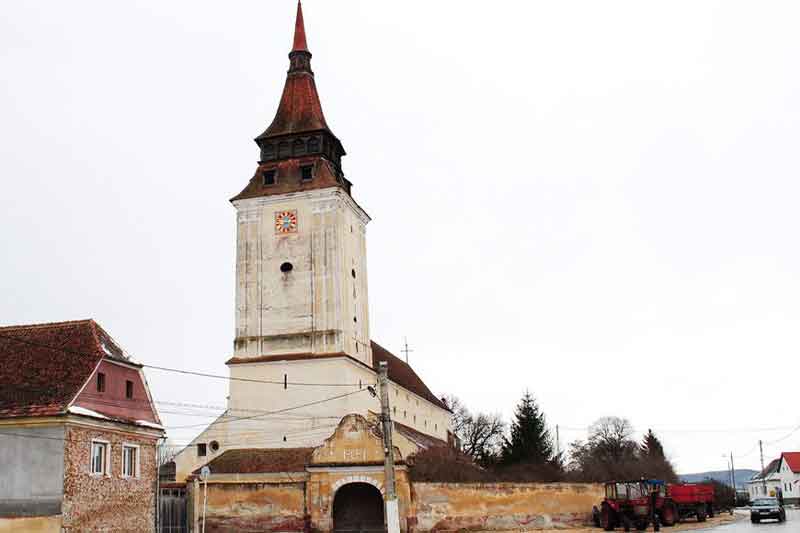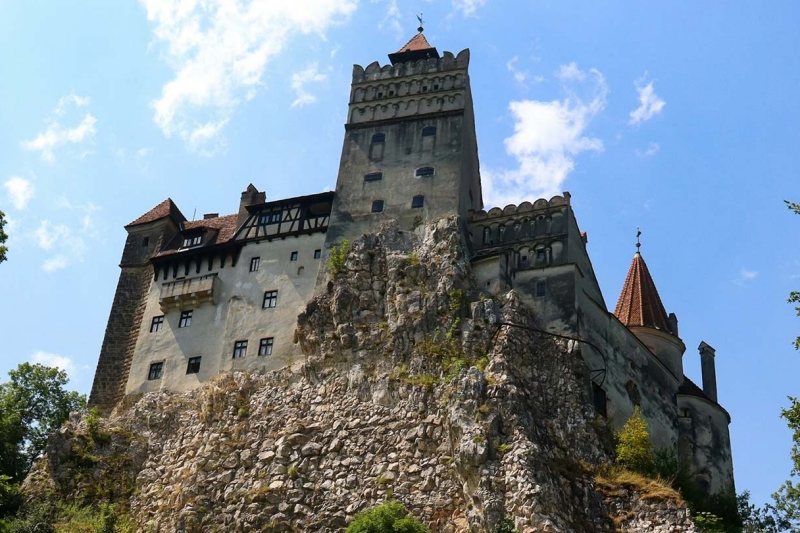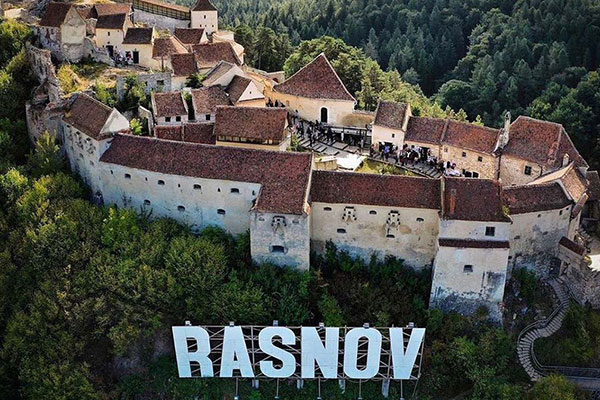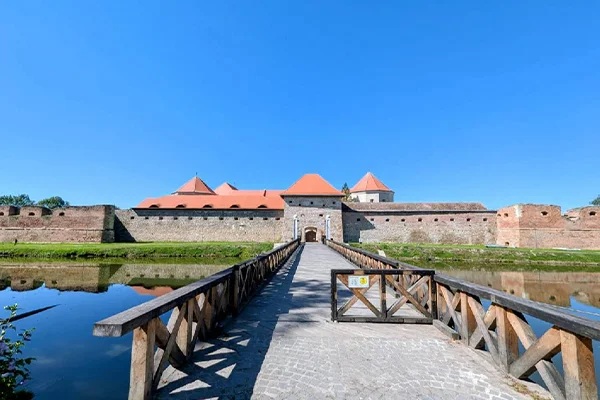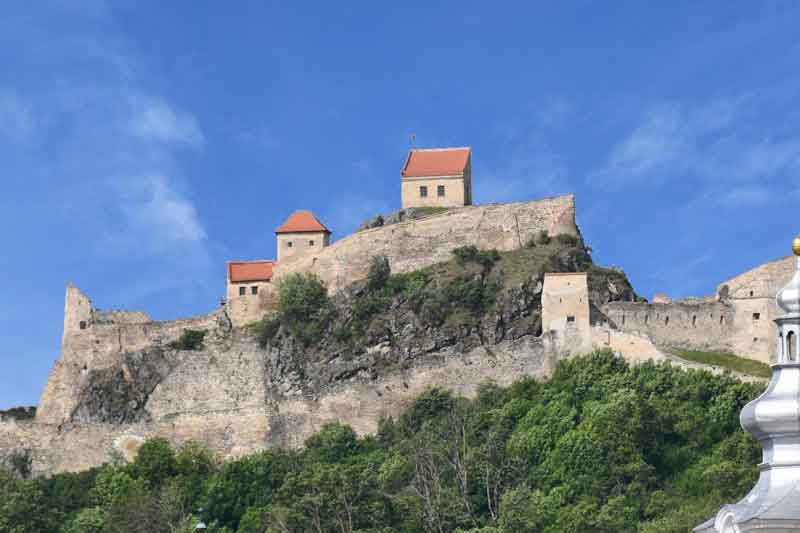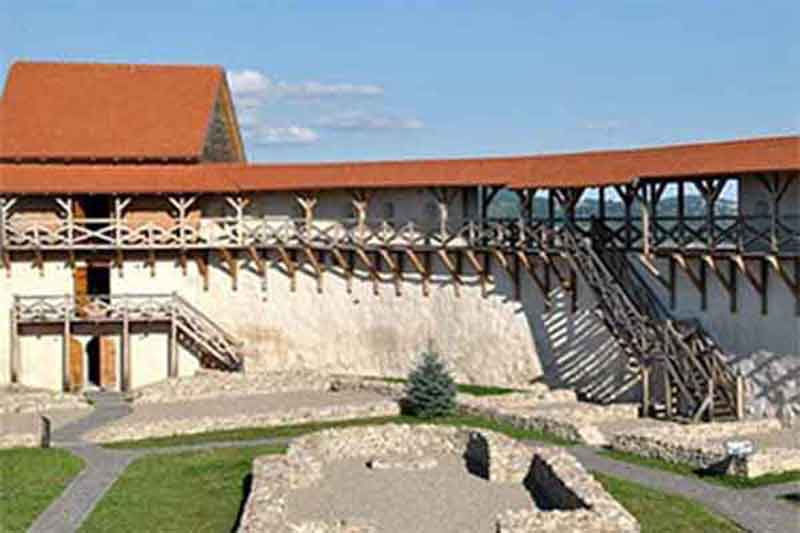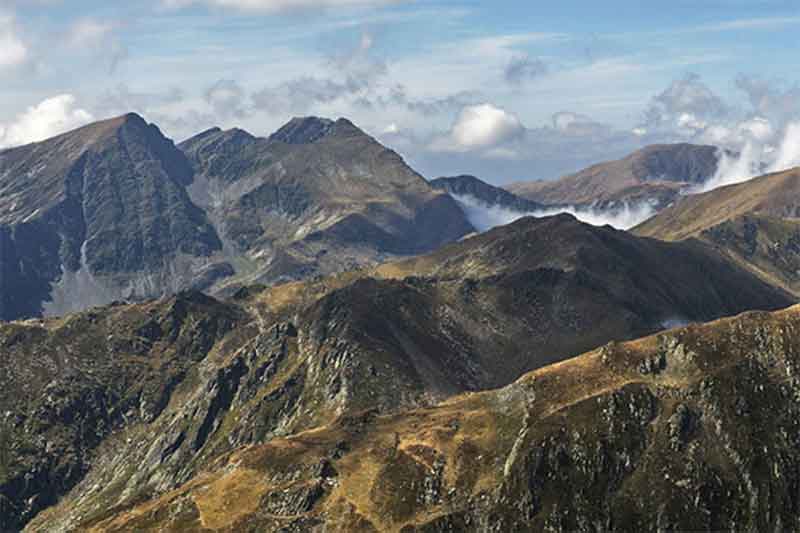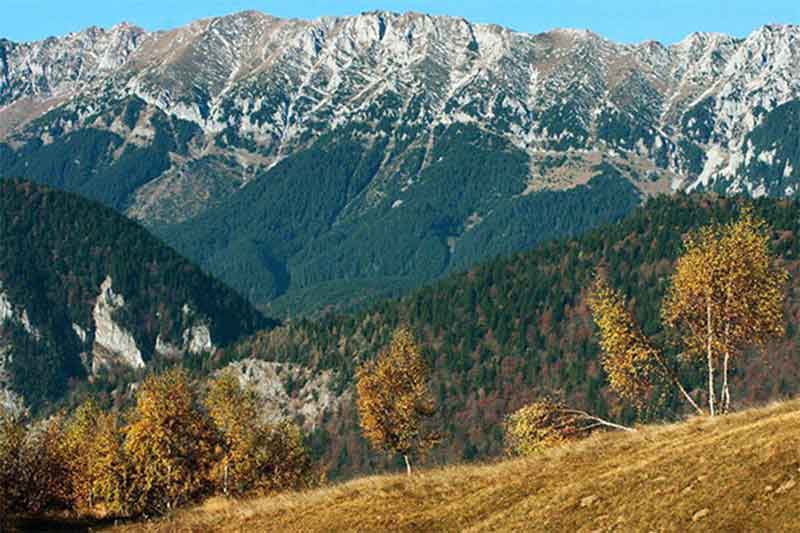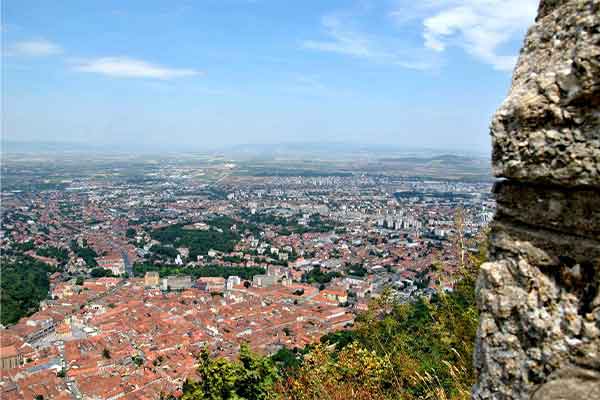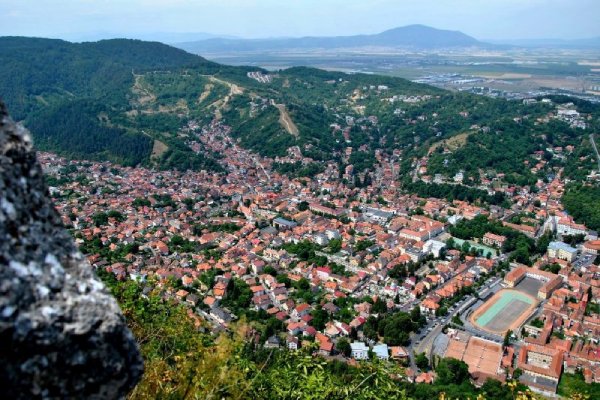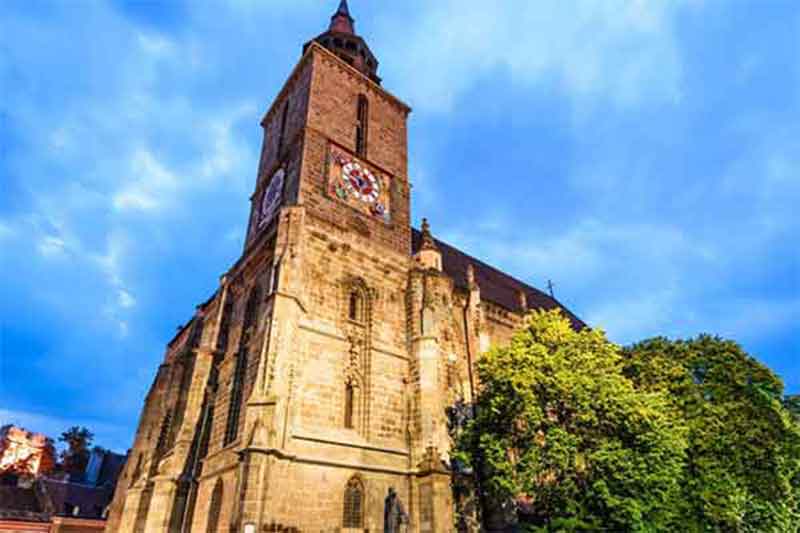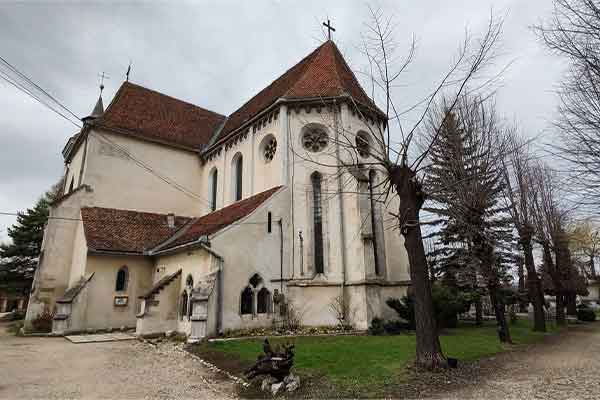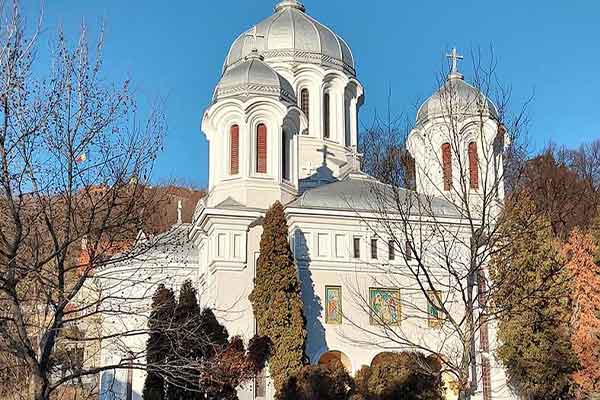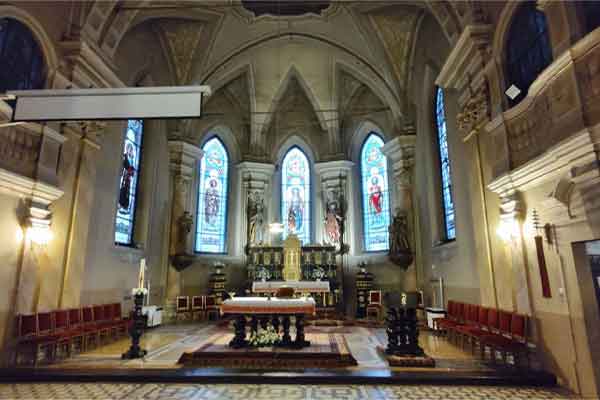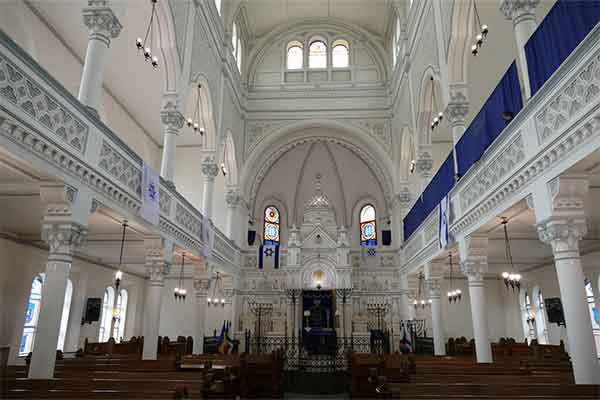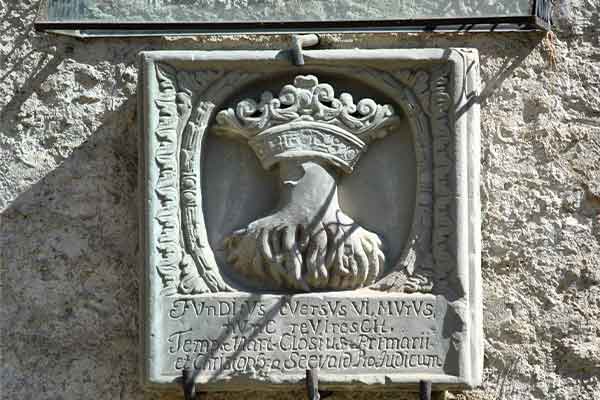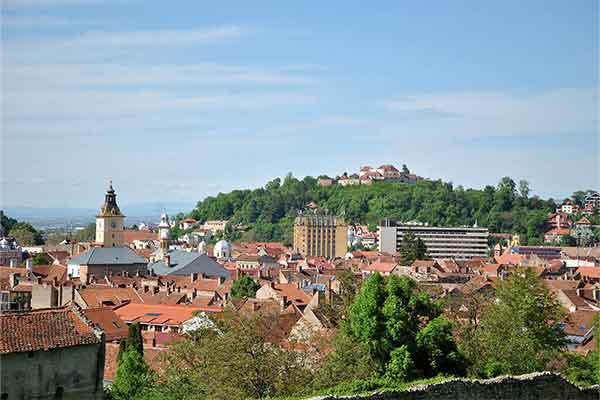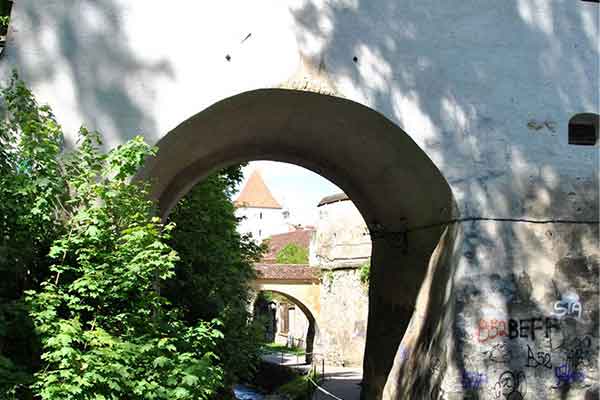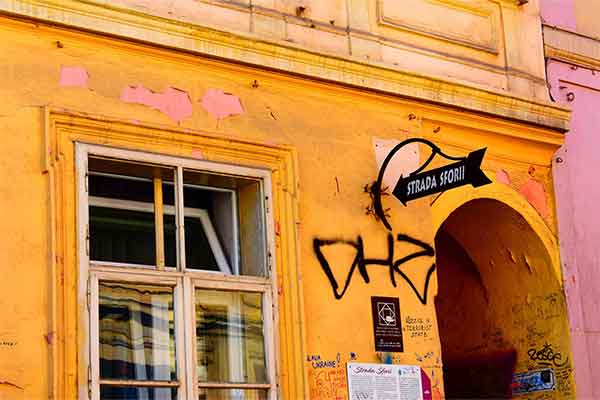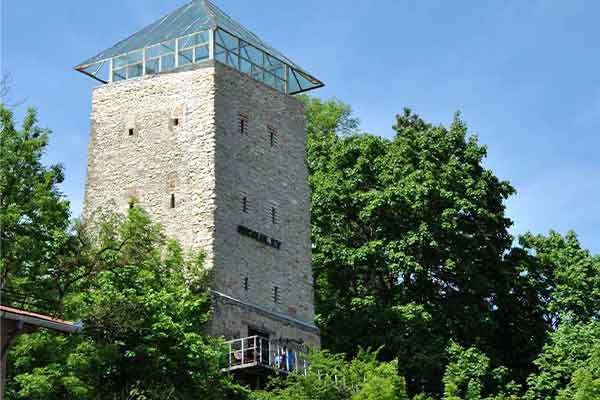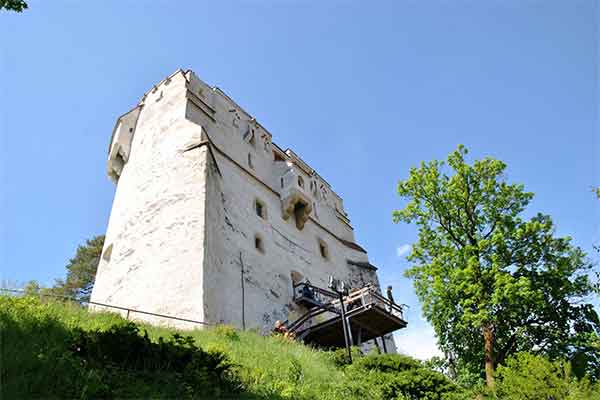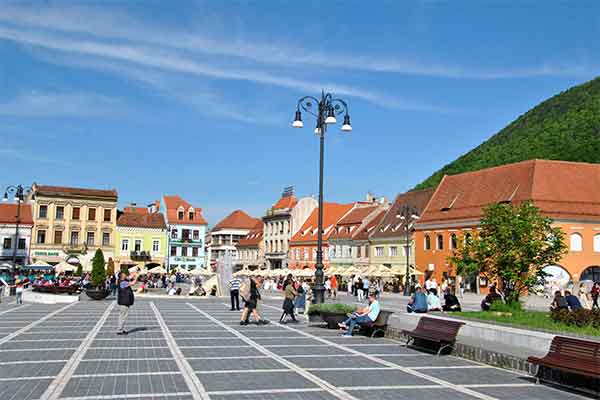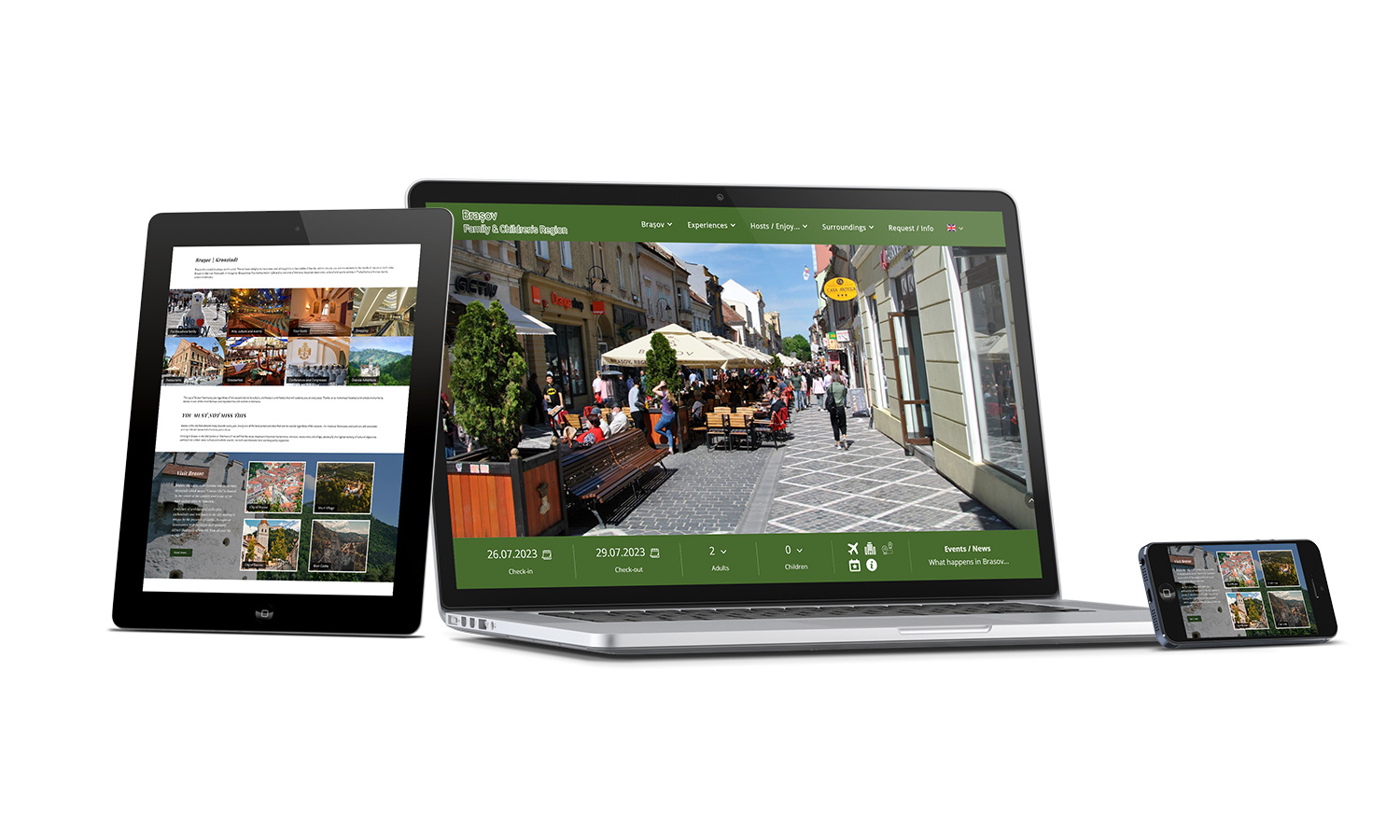Brașov County (Cities: Brașov, Săcele, Fagaras)
Brașov is a Romanian county in the Transylvania region with the capital of Brașov district (German Kronstadt, Hungarian Brassó). The common abbreviation and license plate is BV. Brașov county borders Mureș and Harghita counties in the north, Covasna counties in the east, Prahova, Dâmbovița and Argeș counties in the south and Sibiu county in the west.
Tourist attractions / Excursion destinations and Recommendations / Activities
Fagaras | Brasov County
[More about] [Map]
Făgăraș is a city nestled in the Southern Carpathians, known for Făgăraș Fortress, an imposing medieval stronghold. The city is located near the highest mountains in Romania and is the gateway to the Făgăraș Natural Reserve. Făgăraș is also an important agricultural center, famous for its traditional products. The blend of history, tradition, and mountain landscapes makes Făgăraș an ideal place for rural and adventure tourism.
Rupea | Brasov County
[More about] [Map]
Rupea is a small town in the heart of Transylvania, famous for the medieval fortress that overlooks the surroundings. Rupea Fortress, carefully restored, offers a glimpse into the region’s medieval history and architecture. The town has a peaceful atmosphere, and the mountainous and rural landscapes make it an ideal place for hiking and exploring local traditions. Rupea is a place where the past and present harmoniously blend, with nature and history around every corner.
Fortified Church Viscri | Brasov County
[More about] [Map]
Located in the heart of Transylvania, the Viscri Fortified Church impresses with its massive walls and defensive towers guarding the Saxon village. Built in the 12th century, it combines Gothic style with local elements and is included in the UNESCO heritage. Viscri preserves authentic traditions and is a symbol of cultural coexistence.
Fortified Church Harman | Brasov County
[More about] [Map]
This church, erected in the 13th century in Hărman, is a representative fortification for the Saxon community. Thick walls and bastions shelter a Gothic church with late Gothic elements, blending religious and military roles, exemplifying medieval ingenuity in protecting locals.
Fortified Church Prejmer | Brasov County
[More about] [Map]
The fortified church of Prejmer was founded around 1218 and completed in 1240. As a UNESCO World Heritage Site, the complex impressively preserves the medieval fusion of defensive and sacred architecture. Inside, Gothic details and a winged altar from 1450 bear witness to the cultural depth of the Saxon community.
Fortified Church Cincu | Brasov County
[More about] [Map]
The fortified church of Großschenk (Cincu) was built in the 13th century as a three-nave Romanesque basilica and later remodeled in the Gothic style. The complex, situated on a hill, was surrounded by two concentric walls with bastions and defensive towers, of which only remnants remain today. The interior combines elaborate details from Gothic, Renaissance, and Baroque styles.
Fortified Church Maierus | Brasov County
[More about] [Map]
Located in the center of Măieruș village, this fortified church dates from the 14th century, combining Gothic elements with imposing fortifications. Thick walls and defensive towers protected the Saxon community from invasions. The interior preserves old furniture and frescoes, testimonies of local tradition and ancient faith.
Fortified Church Rupea | Brasov County
[More about] [Map]
The fortified church of Rupea, situated on a hill, dates back to the 14th century. With its massive walls and defensive towers, it offered the community protection in times of danger. To this day, it preserves its impressive Gothic architecture and stands as a unique example of the fusion between defensive and sacred architecture in Transylvania.
Fortified Church Barcut | Brasov County
[More about] [Map]
The original church was built in the 14th century, and then fortified around 1500. That was when the bell tower / donjon was built. In 1845, the church was demolished except for the bell tower / donjon. The reason for that, was likely a large village fire earlier in the century.
Fortified Church Cata | Brasov County
[More about] [Map]
A three-aisled Romanesque pier basilica with bell tower is built in the 13th century. Three round arches with ledged arch imposts separate the nave from the aisles. The chancel arch displays plain cornices at the impost level. The clerestory has Romanesque gemel windows. The choir got a cross vault with plain-moulded ribs and the Romanesque flat ceiling in the nave was replaced with a Gothic cross vault. The church tower collapsed in 1894, and the vaulting of nave was destroyed along with it.
Fortified Church Cincsor | Brasov County
[More about] [Map]
The church itself was built in the 13th century in Romanesque architecture with a tower. Parts of the interior and exterior were then rebuilt in the Gothic style in the first half of the 15th century. The village and its castle have an interesting history, often marked by hardships, but which the population managed to overcome each time. Today, the fortified church is in good condition, both outside and inside, and gives everyone an insight into the history of the village.
Fortified Church Bod | Brasov County
[More about] [Map]
The Romanesque basilica in Bod, built in the 13th century, was repeatedly destroyed and rebuilt. The fortified church has a turbulent history marked by fires and earthquakes. The current church dates to 1806, and its tower was restored after the 1977 earthquake.
Fortified Church Codlea | Brasov County
[More about] [Map]
From a 13th century Romanesque church only the west portal has survived. The Romanesque church was turned into a Gothic hall church in the 15th century. The choir got a 5/8 apse and a ribbed net vault. The ribs spring from diversely decorated consoles. The northern two-storey vestry has a ribbed net vault.
Fortified Church Cristian | Brasov County
[More about] [Map]
Very little has been preserved of the Early-Gothic basilica built and dedicated to Saint Nicholas in the 13th century. The old church was demolished in 1839 and a new hall church with square pillars, cross springers and groin vaults was built until 1841. There are brick-built galleries above round arches in the aisles. The choir has a polygonal 5/8 apse. An oval-shaped double enclosing wall surrounds the church. There is a gate tower with an outwork in the southwest part of the ensemble. The inner wall is 6-10m high and 1.5-2m thick.
Fortified Church Crit | Brasov County
[More about] [Map]
The church-fortress stands on a hill, northwest of the village center. Both the church and the fortress underwent construction works in the 16th century. The spacious two-bay hall church was built in 1810-1813. The church has sail vaults on cross springers. The pilasters display classical cornices. The choir is narrower than the rest of the church and ribbed-vaulted, too. The slender bell tower was built in the west front. There is a classical altar in the choir and above it the organ. There is a two-storey gallery in the western part of the church.
Fortified Church Dacia | Brasov County
[More about] [Map]
Already in the 13th century, a towerless three-nave Romanesque pillar basilica stood in stone. In the 15th century, this church was surrounded by a six to eight meter high defensive wall in the shape of an irregular quadrilateral. It can be assumed that another defensive wall once stood between this wall and the church. When the church was converted into a fortified church around 1500, the side aisles were removed and the arcade arches of the central nave and the upper aisles were bricked up.
Fortified Church Drauseni | Brasov County
[More about] [Map]
A Late-Romanesque pier basilica dedicated to Saint Nicholas was built in the 13th century. It has nave, aisles, choir square, semicircular apse and a west tower. There are fragments of late-14th century mural paintings on the northern wall of the nave. The basilica underwent certain reconstruction work around 1500. The aisles were for the greater part demolished; they survived only nearby the west tower.
Fortified Church Felmer | Brasov County
[More about] [Map]
The fortified church stands on the village green in the centre of the community. Only the ribbed-vaulted choir with semicircular apse has been preserved of the 13th century Romanesque basilica. The adjacent, equally wide church hall has a sail vault supported by pilasters and cross springers. Like the vaults in the hall, the galleries are supported by wooden columns and were built around 1800. The dilapidated church is no longer usable at present.
Fortified Church Fiser | Brasov County
[More about] [Map]
The hall church erected in the 15th century was fortified at the beginning of the 16th century by surrounding the precincts with an oval wall with loopholes, five defence towers and with a later added outer bailey. In the same time two defence levels were built above the chancel, only to be demolished in the 19th century and replaced by a hipped roof. A bell tower with Baroque roof replaced the medieval gate tower in 1862.
Fortified Church Ghimbav | Brasov County
[More about] [Map]
An Early-Gothic basilica was built at the end of 13th century with the choir flanked by two chapels. The bell tower stands in the west wing. There are gemel windows and a Late-Romanesque portal in the cross-vaulted south chapel. The vestry portal has a Romanesque round arch. The choir and the nave have cross-ribbed vaults supported by capitals and wall-shafts. The buttress-supported choir has traceried windows. The ogival arcades of the cross-vaulted porch in the tower open onto the nave and the aisles of the church.
Fortified Church Halchiu | Brasov County
[More about] [Map]
In the 13th century, an early Gothic church was built in Hălchiu and consecrated to St. Andreas. A late Romanesque west portal has been preserved to this day. In the 15th century, a Gothic hall church was built instead. After an earthquake in 1802 it was replaced by a larger hall church, whereby the old foundation walls were reused in places. In 1894/95 the fortification was removed. The inner wall was nine and the outer wall six meters high.
Fortified Church Homorod | Brasov County
[More about] [Map]
The 13th century Romanesque church dedicated to Saint Peter has a choir square, a semicircular apse and a west tower. The well-preserved cross-ribbed-vault of the choir square with rectangular ribs and hanging keystone can be dated to the second half of the 13th century. Access into the cross-vaulted porch on the ground floor of the tower is gained via a triple-stepped Romanesque round arch portal; above the portal, there is a round-arched west gallery facing the church hall. There are a few overlapping layers of mural painting in the choir. The church hall was vaulted around 1500.
Fortified Church Jibert | Brasov County
[More about] [Map]
First mentioned in documents in 1289 as “villa Syberg”, Jibert built a Romanesque hall church with a west tower with a round-arched portal, remarkable stonemasonry work on corbels in the choir and round-arched windows in the 13th century. The bell tower was extended to a massive defense tower around 1450. After the church had already undergone major reconstruction in the 17th century, the west tower was demolished first in 1859 and in the following years the entire building was finally demolished.
Fortified Church Lovnic | Brasov County
[More about] [Map]
In 1883/84 the old church of Lovnic, built in 1507, was demolished along with its simple curtain wall, as were the two defense towers in the northwest and northeast. When this church was demolished, an old wall chronicle in German language from the period 1453 to 1542 was discovered. The foundation stone for the new church was laid in 1884. It was completed in 1886 under the supervision of the master builders Johann and Karl Letz from Sighișoara. It is a spacious, light hall church with a 47-meter-high bell tower to the west. The old bell tower, also demolished in 1884, stood southeast of the church and was also the gate tower.
Fortified Church Mercheasa | Brasov County
[More about] [Map]
Of the Romanesque basilica from the 13th century, the nave and the square of the choir are preserved. In the 15th century, when the side aisles were removed and the arcades were bricked up, the basilica changed into a hall church. In addition, entrance halls were added on the north and south sides in more recent times. The church was once surrounded by a six- to seven-meter high defensive wall from the first half of the 16th century in the form of an irregular quadrilateral with towers in each corner.
Fortified Church Mesendorf | Brasov County
[More about] [Map]
The early Gothic hall church of the 14th century with attached west tower and polygonal choir has two fortification walls equipped with three defense towers, two of which have been preserved. The interior is characterized by the three-sided gallery decorated with Baroque paintings and the winged altar from 1693 with an integrated organ.
Fortified Church Rasnov | Brasov County
[More about] [Map]
The peasant fortress is perched on a 150m high limestone rock, east of Râsnov. The rock drops steeply on three sides and access is gained from the east via the gate tower and the zwinger built in front of the main part of the ensemble. The dome-shaped mountain top is surrounded by a generally 5m-high enclosing wall. There is an outwork and a gate tower with oak gate and portcullis in the southeast section of the fortress. There is a pentagonal tower built in front of the east section of the wall.
Fortified Church Reghin | Brasov County
[More about] [Map]
The beautiful church of Reghin is one of the most significant buildings of the city and was built as a Catholic church in the year 1330 and dedicated to Saint Mary. The inscription that proves this fact is the oldest majuscule inscription in the entire region of Transylvania. The church became Evangelic Lutheran in 1551 in the course of the Lutheran Reformation. In the following years the church was victim to a number of severe strokes of fate: during a revolt in the year 1708 a huge fire ruined the entire church, the parish house and the surrounding fortification.
Fortified Church Roades | Brasov County
[More about] [Map]
The church-fortress stands on a hill west of the village. A noble family of Comites was mentioned in the 15th century. Around 1500 the village of Roadeş belonged to the Sighişoara Chair. A Gothic church, probably a basilica, dedicated to Saint John was built in the 14th century. In spite of a later enveloping process, one can still recognize on the ground floor of the west tower of this old church a porch opening on four sides via pointed arches.
Fortified Church Rotbav | Brasov County
[More about] [Map]
The church-fortress stands in the centre of the village. The building of a flat-covered Romanesque hall church with choir square and semicircular apse took place around 1300. The tower which collapsed in 2015 had a west-oriented round arch opening. In the 15th century, the bell tower was encased; the west portal was bricked up and access to the church hall was thus blocked. During the reconstruction process, the tower was turned into a fortified keep with loopholes, arrow slits and machicolation on the corbel-supported top floor, it’s sad that today we are not longer able to see this tower.
Fortified Church Rodbav | Brasov County
[More about] [Map]
On a hill, a Romanesque pillar arcade basilica was built at the beginning of the 13th century. Badly destroyed by the Mongolian storm, the church was rebuilt at the end of the 13th century as a Romanesque basilica with a bell tower. The bell tower is integrated into the western facade and takes up the entire width of the central nave. In the 15th century, the basilica was redesigned as a fortified church. The side aisles were demolished and a fortified floor was built over the nave and the choir. The west portal was walled up and the tower was given a battlement.
Fortified Church Soars | Brasov County
[More about] [Map]
The fortified church lies south of the main street. The church dedicated to Saint Jacob was first mentioned in 1449. This is the moment when the construction of the Gothic hall church with the equally wide polygonal choir was completed. Without exhaustive archaeological examinations, the existence of an earlier Romanesque building can only be presumed. There are fragments of a choir screen in the lower part of the chancel arch.
Fortified Church Vulcan | Brasov County
[More about] [Map]
Although Vulcan belongs to the smaller municipalities in the Brasov region, the church-fortress displays a relatively large enclosure with diameters ranging from 67m to 49m. One can assume that the chancel arch comes from an earlier Romanesque church to which a Gothic, buttress-supported, stone-rib-vaulted choir was built in the 15th century. The ribs rest on human-masked corbels. The church was destroyed by Gabriel Bátory’s troops (Prince of Transylvania) in 1611 and left in ruins for 54 years. It was rebuilt in 1665. The church hall got a coffered ceiling.
Fortified Church Toarcla | Brasov County
[More about] [Map]
The Romanesque basilica of Toarcla dates from the 13th century and is dedicated to St. Catherine. At the turn of the 15th to the 16th century, it was fortified. It has two side aisles and a mighty west tower, which is as wide as the central nave. The choir with semicircular apse has a cross vault. The first floor of the tower also boasts a cross vault and carries the western gallery. Below the sound windows of the belfry of the tower, there are twin windows with round arches.
Evangelical Church Sanpetru | Brasov County
[More about] [Map]
The fortified church of Sânpetru was founded in the 13th century and is known for its ornate altars and well-preserved interior. It combines traditional Saxon craftsmanship with a vibrant community spirit, making it a cultural gem where history and artisanship come alive.
Evangelical Church Fagaras | Brasov County
[More about] [Map]
The Evangelical church in Făgăraș was built in the 15th century and is now a listed historic monument. It combines various architectural styles and once served as a key center for the German community. Its thick walls and towers provided protection, while valuable furnishings and decorations remain preserved inside.
John the Baptist Orthodox Cathedral Fagaras | Brasov County
[More about] [Map]
This impressive cathedral in Făgăraș serves as the city’s religious center. Its architectural style combines neoclassical and Baroque elements, and the richly decorated interior reflects the faith of the Orthodox community. The cathedral is a striking landmark in the religious and cultural landscape of the region.
Evangelical church Feldioara | Brasov County
[More about] [Map]
The fortified church of Feldioara is located at nearly 500 meters above sea level, about 20 km from Brașov, overlooking the mountains. The castle was built in 1211 as part of border defenses by the Teutonic Order. After suffering earthquake damage in 1838, it was restored between 2013 and 2017. The site is a significant example of medieval military architecture and religious culture in the Brașov region.
Bran Castle | Brasov County
[More about] [Map]
The Bran Castle, known around the world as ‘Dracula’s Castle’, is a major tourist attraction and of enorme importance to this country. It served as the inspiration for several Hollywood films featuring Dracula as the main character. Just 30 kilometres from Brașov, it is an ideal destination for a day trip. Its wonderful location alone makes it worth a visit.
Rasnov Fortress | Brasov County
[More about] [Map]
Râșnov Fortress is one of the most beautiful fortresses in the Romanian country, and you can’t help but notice this wonder on the road from Brașov to Moeciu, so you will definitely want to stop on the way for a visit. It was chosen by several directors for filming from various eras, one of the most important films shot here being Cold Mountain, the Oscar-winning film with Nicole Kidman.
Fagaras Citadel | Brasov County
[More about] [Map]
The Făgăraș Citadel is of particular beauty and represents the most important monument of Făgăraș, being at the same time one of the largest tourist attractions in Romania. A wonderful area with dreamy views, with fresh and soothing mountain air, can certainly be an extraordinary atmosphere to spend a few days of vacation. It is located right in the center of Făgăraș municipality, in Brașov county, thus being an opportunity to take a tour of this amazing area in Transylvania.
Rupea Fortresses | Brasov County
[More about] [Map]
The Rupea Fortress is located 50 kilometres from Brașov and is one of the oldest medieval castles in Romania. Although not quite as famous, the Rupea Fortress is one of the most beautiful buildings in Romania. It is surrounded by beautiful countryside and a charming town.
Fortress Marienburg in Feldioara | Brasov County
[More about] [Map]
The Marienburg Castle in Feldioara, a medieval stronghold of the Teutonic Order, is situated in the Transylvanian region of Brașov County. Built on a hill at nearly 500 metres above sea level, it commands breathtaking views of the surrounding countryside and the Brașov Mountains. Located about 20 kilometres from Brașov, it lies along the road to Sighisoara.
Fagaras Mountains | Brasov County
[More about] [Map]
The Făgăraș Mountains are located in the Southern Carpathian mountain range in Romania. The ridge is about 70 km long and 40 km wide. The mountain range covers an area of almost 2,000 square kilometers and rises with Mount Moldoveanu (west of Brașov) at an altitude of 2,544 meters.
Piatra Craiului National Park | Brasov County
[More about] [Map]
Romania is one of the most biodiverse countries in Europe in terms of flora and fauna. The flora and fauna are clean and diverse and in addition to bears (two thirds of Europe’s bear population live in the forests here), with a bit of luck you can also see wild boars, foxes and owls during the day.
Tampa Mountains | Brasov City
[More about] [Map]
Tâmpa Mountain rises majestically above the city of Brașov, offering breathtaking views of the historic old town. You can reach the mountain on foot or by cable car. The easy forest trails are perfect for exploring on foot. The nature reserve, which is shrouded in legend, is located just a few minutes from the city.
Tampa Peak | Brasov City
[More about] [Map]
One thing you should definitely not miss in Kronstadt (Brasov) is the climb to Vârful Tampa (in English, the pinnacle) at an altitude of 960 metres. Several paths lead up from the old town, including the Gabony Stairs and the 25 Serpentine Paths. The hike takes about 1 hour and 30 minutes.
The Black Church | Brasov City
[More about] [Map]
The Black Church in Brasov is the largest Gothic religious building in Romania. Built in the 15th century, it impresses with its imposing architecture and rich history. The name comes from the 1689 fire that blackened the walls. It houses a valuable collection of 110 oriental carpets and a famous organ.
St. Bartholomew Evanghelical Church | Brasov City
[More about] [Map]
The Church of Saint Bartholomew in Brașov (Kronstadt) dates back to the first half of the 13th century and is the city’s oldest structure. Originally Romanesque, it received early Gothic influences from the Cistercians after the Mongol invasion. With its tall tower, it defines the Bartholomeu district and houses valuable organs and paintings of the Evangelical community.
Annunciation Church | Brasov City
[More about] [Map]
The Annunciation Church (Biserica Buna Vestire) in Brașov was built between 1934 and 1937 based on plans by architect Octavian Smighelschi. It combines traditional Orthodox and modern elements and holds great significance for the local faithful. The interior houses a valuable wooden iconostasis from the 18th century, reflecting the history and religious life of the Orthodox community.
Holy Trinity Roman Catholic Church | Brasov City
[More about] [Map]
This Roman Catholic parish church on the Great Square (Piața Mare) was built by the Jesuits between 1726 and 1733 in Viennese Baroque style and received its separate tower in 1738. With its modest façade, the Mary-and-Child altar, and remarkable stained-glass windows, it ranks among the most important Baroque churches in Transylvania.
Beth Israel Synagogue – Neologa Synagogue | Brasov City
[More about] [Map]
The Beth Israel Synagogue in Brasov is a Jewish place of worship and one of the most beautiful in Europe with a small but active community that maintains with dedication the Jewish tradition. It was built between 1899 and 1901 in neo-Gothic style with Moorish accents and since 2015 is on the List of Historical Monuments of Brasov.
Bastion of the Weavers or History Museum | Brasov City
[More about] [Map]
The History Museum of the City and County of Brasov was founded in 1950 and is located in the former Municipal House in the centre of Piata (Square) Sfatului or, to some extent, in the Bastion Tesatorilor in Brasov (Kronstadt). The bastion, defended and maintained by the Linen Weavers’ Guild, was built in two stages between 1421 – 1436 and 1570 – 1573.
Citadel on the Watchtower | Brasov City
[More about] [Map]
The fortress is a fortification built in the 15th century on Straja hill to prevent enemy attacks. Throughout its history it has been attacked and reconditioned, being an important point of defence even in the First World War. Originally there was only the fortress tower, and in 1630-1631 the outer fortress was built. The horseshoe-shaped central tower has 3 floors and has served several roles over the centuries: it served as a storehouse, was a prison for Turkish prisoners in the 18th century and later, during the plague, a special section for the sick was set up.
Graft Bastion | Brasov City
[More about] [Map]
It was built between 1515-1521 and was used to link the city’s armies to the White Tower. Its position, in the middle of the N-W side of the fortress, made the bastion increase the possibilities of defending that area. This is also known as the Gate Bastion because of its shape. In the 16th century the north-west wall of the fortress is doubled by another outer wall. At the same time, the waters coming from the Schei were caught in a canal (in German Graft), which flowed at the foot of the newly built wall.
Sforii Street | Brasov City
[More about] [Map]
This street dates back to the 17th century, when it was a simple corridor built to facilitate the work of firemen. The width of the street is between 1.11 and 1.35m and the length is 80m. It is currently the third narrowest street in Europe. Legend has it that in medieval times it was here that couples hid to kiss in privacy. Nowadays, it is said that lovers who kiss on this street will stay together for life.
Black Tower | Brasov City
[More about] [Map]
The Black Tower is one of the four observation towers of Brasov Fortress and was built as an independent fortification outside the walls of the fortress, it is 11 meters high. The construction of the tower was started at the end of the 16th century, beginning of the 17th century. The tower could be entered through a gate that was 2 metres above the base and the connection between the city fortifications and the tower was made by a drawbridge.
White Tower | Brasov City
[More about] [Map]
If you want to see the whole old town from high above and have a dreamy view in front of your eyes, you should definitely come here. Everything here seems magical and surreal and makes you wish time would stand still. The White Tower was built between 1460 and 1494 and still impresses today with the massiveness and suppleness of its architectural lines.
Council Square and Council House | Brasov City
[More about] [Map]
The Council Square is located in the heart of the medieval old town and is surrounded by the beautiful houses of former merchants. Council House – Built in 1420, the Council House served for centuries as a meeting place for members of the city council. In the early 17th century, the building’s watchtower became the place from which a trumpeter announced the rush hour and was therefore nicknamed the “Trumpet Tower”. Today, the Old Town Hall houses the Museum of History of Brasov.
International Airport Brasov-Ghimbav | Brasov
[More about] [Map]
The airport offers quick and convenient access to numerous tourist destinations in Romania, making it an ideal starting point for those who want to explore the country’s beauty. Thanks to its modern infrastructure and efficient connections, travelers can easily reach different regions. The airport is therefore the gateway to unique natural landscapes, cities steeped in history, heritage monuments, and a variety of authentic experiences.
Discover Brașov
Brasov, the Latin name Corona and in German Kronstadt which means “Crown City” is located in the center of the country and is one of the most visited cities in Romania.
A mixture of architectural styles give authenticity and brilliance to the city making it unique by the presence of Gothic, Baroque or Renaissance style buildings that annually attract thousands of tourists from all over the world.
Facebook PostsView all Facebook posts!









